
Caring For Our Coastline
Students Talk Careers & Culture






Caring For Our Coastline
Students Talk Careers & Culture




> Powerful Performance
> Distinctive Design
> Advanced Technology
> Luxurious Comfort
> European Designed













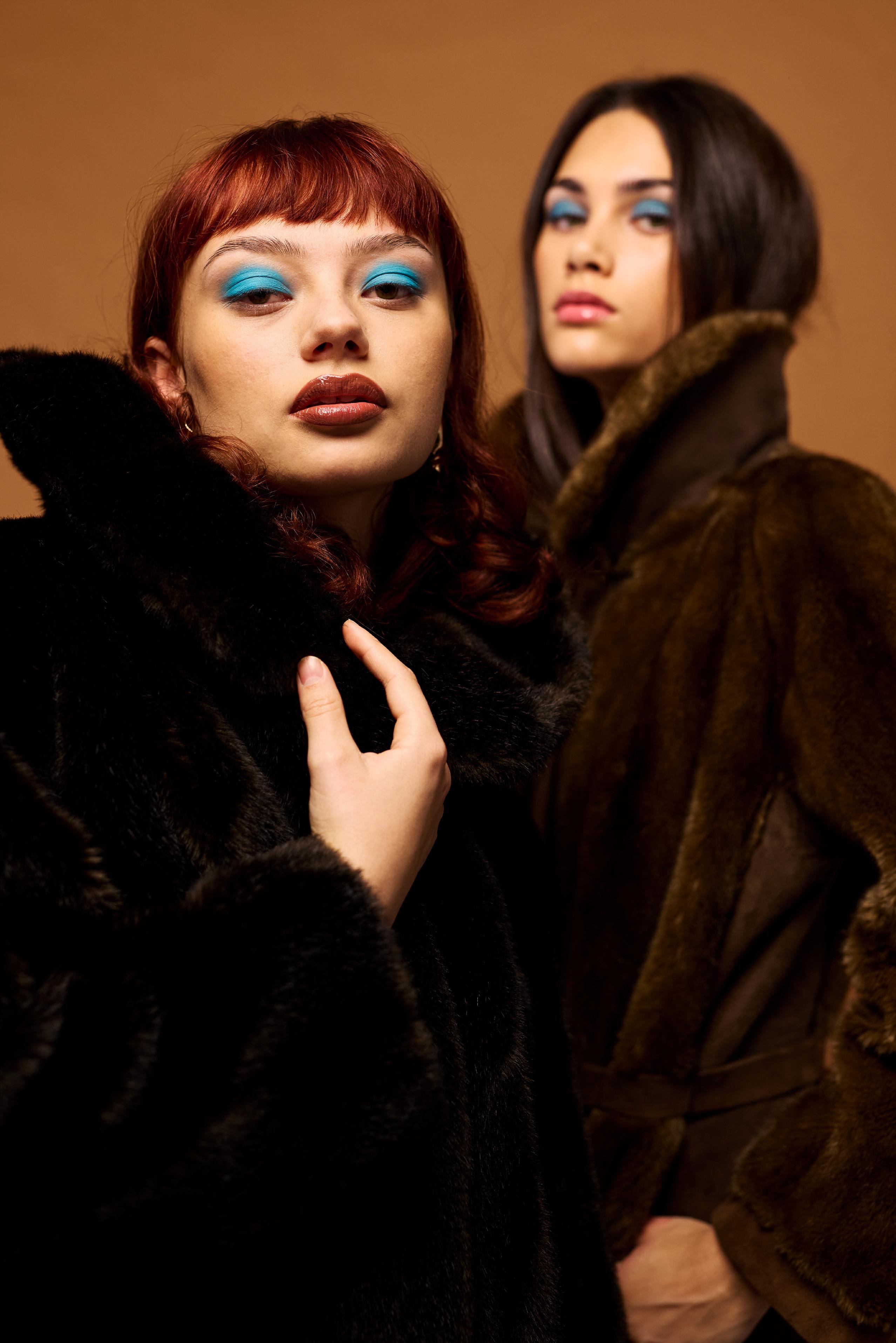





Cultivating nostalgic and considered designs, created for the beach kid at heart

@kokomo store www.kokomostore.co.nz






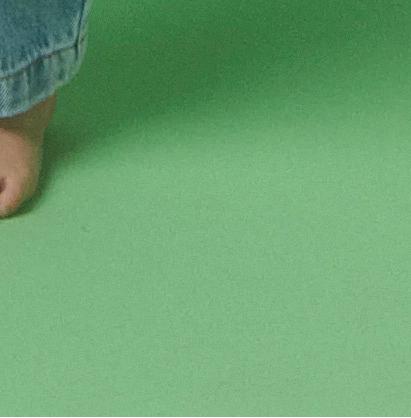

Rachelle & Christopher Du y Christopher Du y
social@ourplacemagazine.co.nz
rachelle@ourplacemagazine.co.nz
Zoe Hunter, Holly McVicar, Cherie Metcalfe, Christopher Du y, Katherine Whittaker, Kristin Macfarlane, Taska Kemp-Green, Tess Matecki.
Naera Ohia, ilk, Chrissie Spence, Mia Smith
Pick up your copy from The Little Big Markets, plus at selected cafes, restaurants,
Want to receive regular copies of for your business to distribute? Email rachelle@ourplacemagazine.co.nz
To tell us about anything happening
Cover photography: A kaitiaki of the coastline, John Tawharu’s favourite place is at the beach by ilk. Contents photography: Mama’s Korero
The views expressed are the writers’ own and do not necessarily reflect the opinions of Our Place magazine. Some of the content has
Follow us @ourplacemagazine
With winter almost behind us and spring just around the corner, our latest issue is
simply
blooming with stories to brighten your day.
As an iconic coastal restoration programme celebrates 30 years of restoring and protecting our sand dunes, we meet John Tawharu - a superhero of the sand dunes, a kaitiaki of the coastline (page 23). In our Kōrero series, come with us as we speak to mum, mentor, and motivator Melissa Te Kani who - after experiencing her own trauma - shares how she will take women on a hikoi of healing (page 39). We also introduce an inaugural student-led column, giving inspiring writers from local schools a platform to share their creativity and talent (page 70). Meanwhile, we find out how a little local town gave ballet dancer Ty King-Wall the support to dream big (page 98), and get invited to one of private chef Madeleine Hughes’ first Sunday Suppers (page 54).
Pepper & Me’s founder and renowned chef, Cherie Metcalfe, gives us the scoop on scones as she hunts for the Bay’s best cheesy, buttery treat in our Foodie Finds feature (page 78). Plus, Holly McVicar shares recipes that hero citrus and add a pop of colour to your table, including mini chocolate orange cakes, spicy grapefruit magaritas, and a refreshing mandarin fennel salad (page 90).
We also experience the ‘90s SoCal punk, hardcore, new wave, and indie shoegaze sounds of local punk band Six Twos (page 84). What started as four dads - Andy Veysey, Bruce Tod, Sam Cummins, and Carl Bogue - getting together over a shared love of punk rock, has resulted in the release of the band’s third EP titled ‘Facades’.
Here’s to another issue of vibrant, heart-warming, and inspiring content that continues to champion our people and our place.
Warm regards, The Our Place team
Architectural excellence, designed with purpose for everyday living. @jmac_architecture | jmacarchitecture.co.nz | jason@jmacarchitecture.co.nz











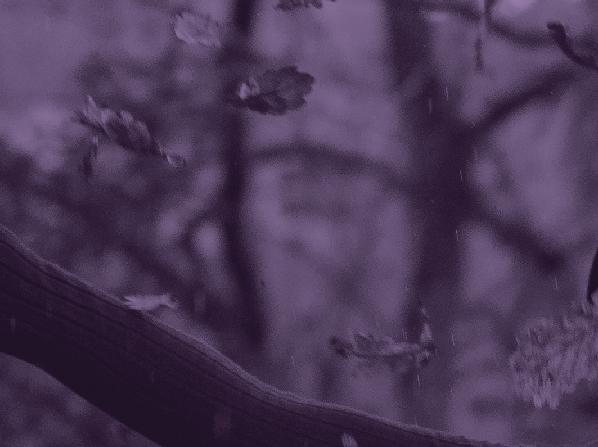






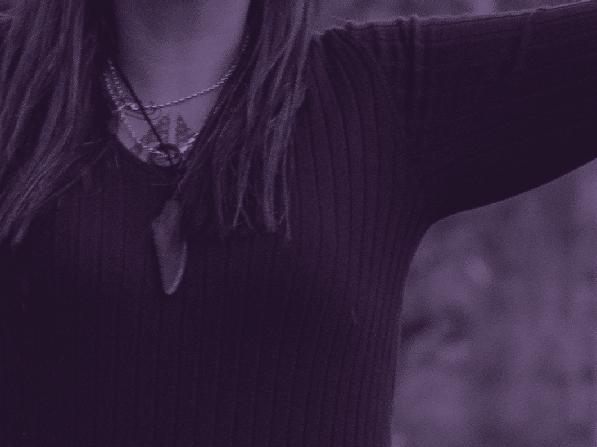
















19 OCTOBER 2024
A w a puni R a cecours e . P a lm er ston Nort h
Bou t iqu e dis t ill er i e s
O n-sit e b ar s
Live e n te rt a inm e n t
F ood t ruck dinin g
O N E EPI C DaY OUT !
TI C KE T S O N
S ALE N O W S C AN HER E
@s a lud . f e stiv a l

saludfestiv a l . c o .n z

Solera is welcoming head chef David Bryson to run the kitchen. David is Solera’s former sous chef, and has also worked at Clarence and in the United Kingdom’s Michelin star restaurants.
The menu is still focused around sharing, however, it is more welcoming to those who wish to order their own meals. A big difference between the old and current menu is price. The team at Solera has certainly been very conscious about the current economic climate and this menu reflects that, without sacrificing quality. No individual items exceed $40, and the chef’s menu has dropped from $90 to $75 without sacrificing the amount of food. The menu’s many great standouts include the cabbage dish, the venison tartare, the tuna pancetta snack, and the pork scotch with mustard glaze, puffed rice, and pork crackling. The snapper fillet with a butter milk and burnt yeast sauce is out of this world, with very unique and exciting flavours.
→ Solera, 165 Maunganui Rd, Mount Maunganui
There’s now even more reasons to visit wildflour, the ingredientconscious bakery nestled behind Mount Maunganui’s new skate park. Wildflour has created a new family-friendly space to enjoy a freshly made cinnamon bun, warm focaccia toastie, plant based croissant, or one of their famous slices.
Sip on a locally roasted Folk Brewers coffee, while your little ones explore the new children’s area, with a colouring table, kids’ play kitchen, wooden toys, and reading nook.
The perfect relaxed, child-friendly atmosphere for a weekday play date, or park your scooters and board out front, and enjoy a Saturday morning with the family at the bakery.
Open weekdays 7am-1pm, and Saturdays 8am-1pm → wildflourmount.co.nz @wildflour_


Nearly 30 years after first bringing Les Misérables to Baycourt Community and Arts Centre, Tauranga Musical Theatre is thrilled to present a brand new, reimagined production of Les Misérables. Set against the backdrop of 19th Century France, Les Misérables tells an enthralling story of adversity, broken dreams, and unrequited love, passion, sacrifice and redemption – a timeless testament to the survival of the human spirit. This epic and uplifting story has become one of the most celebrated musicals in theatrical history.
→ Baycourt, September 11-15. Tickets available at eventfinda.co.nz/2024/les-miserables/tauranga


Words by Zoe Hunter

From homemade donuts and dumplings, to one-of-a-kind fashion finds and pottery pieces, everything is made with love at our markets. Come and see what some of our Saturday stallholders have to share.

Brogan Houghton loves being able to create work people can not only treasure, but use in everyday life. She’s been creating handmade, yet functional, pottery - such as mugs, bowls, and tumblers - for the last four years. Her current collections embrace pops of colour, either through glazed or hand-stained clay, or painted hearts - each hand-crafted into its own unique piece of pottery.
“It is fulfilling to be ale to create work that other people get excited about,” she says. “I find joy in always experimenting and learning different techniques to upskill and influence new collections of work in my own pratice.”
Brogan loves showing her pottery at The Little Big Markets because of the always-thriving atmosphere and being surrounded by other talented artists. “The Little Big Markets is such a supportive community and provides a great opportunity to connect with fellow artists and makers.
“It is also nice to share tips and insights with those just starting, or wanting to start pottery.”
broganhandmadepottery
From our family to yours - mai to mātou whānau, ki tō whānau.
That is the tagline behind the delicious Mamasdonuts, where donuts are fresh and mama knows best. Mamasdonuts are made the old-school way - by hand and with a whole lot of love!
They are made fresh daily at the Tauranga store on Cameron Rd so customers can get to enjoy the homemade donut taste and texture, just like mama used to make them!
The team offers donuts for your special event. Whether it’s a wedding, party, or for fundraising, their delicious donuts are the perfect addition to your menu.
Additionally, they offer donut decoration programmes during school holidays, where kids can unleash their creativity and decorate their own donuts.
The Mamasdonuts team loves that they can share their donut journey with everyone at The Little Big Markets, and hopes that anyone who gets their hand on one can experience a little bit of home in every bite!
mamasdonuts.co.nz mamasdonutsnz



↑ Demi’s garments are one-of-a-kind, and handmade with love from recycled, repurposed, and thrifted fabrics.
Sewing has always been an art form that Demi Rudd has gravitated towards.
“From movies and costumes, to bridal, and everyday wear, I have always cut, sewn, and remade clothing to fit my style,” Demi says.
Plucking up the courage to sew again after having her son, Demi decided it was also time to let others enjoy her passion project.
Dearest Demi is fashion with a conscience, and creating with sustainability in mind.
“My garments are unique, one-of-a-kind, and handmade with love from recycled, repurposed, and thrifted fabrics - reducing clothing waste by up-cycling and making something new and fashionable.
“They are cleverly designed to fit more than one size, worn multiple ways, and to create that unique twist for the unconventional woman’s wardrobe.”
Demi says it is fun running her own business. “Deciding to turn Dearest Demi into a little side hustle was quite a big thing for me. I love to sew, and I just wanted others to have a little piece of my creative outlet.”
Growing up, Demi often experimented with clothing.
“I always had comments from my friends saying: ‘That is a Demi dress’. So, I think I have always had a type of dress that I’m drawn to.
“I love a gather and fullness. I think details and manipulations are fun and unique, and style is meant to be pushed to the limits.
“I fall in love with every garment I make, which I think makes it that much more special when I see it on someone else.”
Demi says she lets the fabric guide her in her designing process, and doesn’t always know where it’s going to end up.
“Using recycled and thrifted fabrics means I need to get more creative, as I only have limited fabric to play with.
“I have always loved thrifting in general, and I love to upcycle. I noticed so many fabrics and offcuts in my local thrift stores that I’m pretty sure were just waiting for me to make them into something new again!
“Plus, a massive bonus of knowing no one will have the same garment again just makes it that much more great.”
The Little Big Markets were a perfect platform to showcase my designs, and get her name out into the area. “Along with my talented artist friend, Lily Ivana, we decided it was time to get a stall and to get our names out into the area.
“I love networking with all the vendors and you never know who you are going to meet.”
dearestdemi.com dearestdemi_
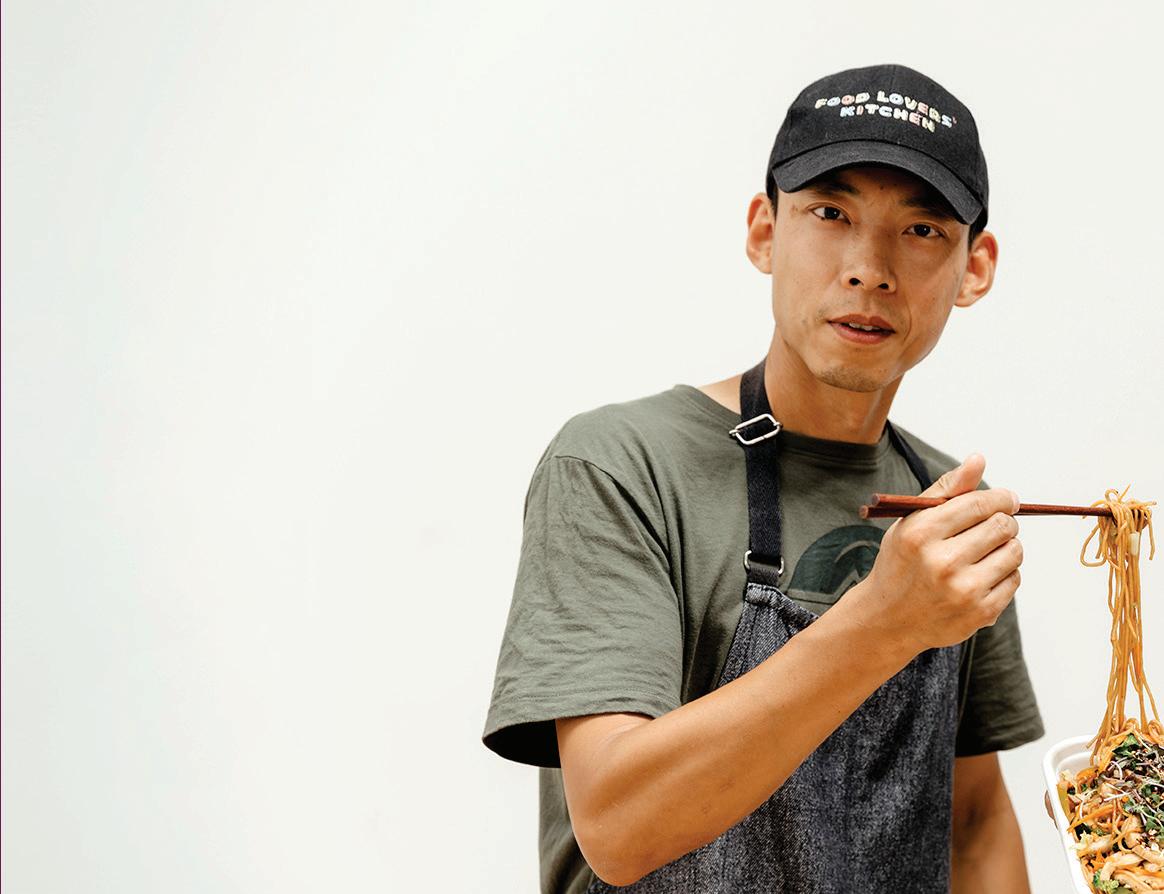

↑ Husband-and-wife Jimmy and Tracey Zeng have learned food brings people together.
Food Lovers’ Kitchen is a small family-owned business.
When husband-and-wife Tracey and Jimmy Zeng first started, their goal was to make money!
But the more time they spent with other good ‘foodies’, the more they learned food brought people together.
Tracey says it is an interesting life experience working with her other half in a small family-owned business.
“We have now found the comfort zone for both of us, and we actually quite enjoy working alongside each other,” Tracey says.
“Jimmy is a very supportive person. He’s been a strong backbone to me.”
Being her own boss was something Tracey says she could not have dreamed of before.
“It seemed too big, too un-secured to a woman without much career ambition.
“But now, I would like to say it’s such a great feeling being your own boss when you know your passion, and I would not hesitate to encourage people to step out their comfort zone to try.”
Their products are handmade dumplings and pork buns, Sichuan Spicy Noodles with Jimmy’s handcrafted pure chilli oil.
“Dumplings and pork buns are the very classic symbols that tell people straightforward who we are, where we are from.”
Jimmy is from the spicy Cheng Du city of China, so the chilli oil he crafted is a must-have on their menu. Pork and chive dumplings are one of the beloved flavours in China and one of their best-selling products.
“We use our very traditional family recipe because our kids love it so much.
“Every Chinese family will tell you the same story that they have their perfect family recipe.
“I guess it’s the charm of warm-hearted home cooked recipes.”
Tracey is a big fan of veggie dumplings, so they have to pass her taste test first before they show up on the menu. Tracey and Jimmy shop their main ingredients from farmers markets, including organic/ spray-free curly kale, spray-free pumpkins, capsicums, and broccoli. And all of their products are made and cooked with rice bran oil and good quality sesame oil.
“We both are very proud that we have the chance to bring produce that we like to share with local food lovers.” Tracey says you can never ever underestimate the power of people who know good food when they see it.
“They know so much about the ‘goodness’ we eat. Through good food, we laugh, we learn, we share, and we enjoy.
We also appreciate the local small food businesses’ support. We learned a lot while working alongside them, and we are proud we’re one of them.”
foodlovers_kitchen_nz_ltd

Even a weird one (we don't mind). For every new client you refer to us for a dental exam, you’ll receive a $40 credit to your account.
Book online or call us on 07 575 6278.
MT MAUNGANUI | P Ā P Ā MOA | TE
TOOTHFAIRYDENTAL.CO.NZ




John feels a deep sense of responsibility to the native dune plants. Because it’s through his mahi that they’re here today. He’s helped restore the dunes for the last 30 years as part of Coast Care.
Perching himself on a wooden bench on the beach, John Tawharu takes a quiet moment in his happy place.
A smile forms on his face as his eyes drift over the dunes. Like a proud father, he watches as hundreds of native spinifex and pingao plants dance in the breeze, tolerating the salty sea air and shifting sands.
John, 60, feels a deep sense of responsibility to these plants because it is through his mahi that they are there today. For the last three decades, he’s helped restore dunes as part of Coast Care, a coastal restoration programme that aims to restore and protect the sand dunes along the Bay of Plenty beaches.
In essence, he is a superhero of the sand dunes, a kaitiaki of the coastline.
“I do feel like I own it in some ways because I have been involved in planting all of it along here,” he says as he waves his hand over the Omanu Beach dunes.
“I am one of a group of kaitiaki, and I am proud of that.”
The beach is in the Tawharu whanau’s blood. It is not nearly midday and John has been for a surf and is already planning another.
A street back from the beach is where he has lived for 30 years and where his children, Elin and Jonas Tawharu, learned to surf. The surfing siblings have represented New Zealand at the ISA World Junior Surf Championship, with Elin achieving a bronze medal in Azores, Portugal.
“We are a surfing family,” John says. “We just love it.”
John’s connection to the coastline has been fundamental to his interest in helping Coast Care since its inception.
As the programme – which is co-funded by Toi Moana Bay of Plenty Regional Council, Western Bay of Plenty District Council, Tauranga City Council, Whakatāne District Council, Ōpōtiki District Council, and Department of Conservation –celebrates its milestone 30th anniversary this year, so too does John.
John is a founding member of Coast Care, first volunteering when he was teaching at Tahatai Coast School in Pāpāmoa and working alongside coastal restoration specialist Greg Jenks.
Back then, John says there was a lot of erosion in Pāpāmoa and sand banks were deteriorating.
He would educate the primary school pupils about the impacts on the beach and remembers surveying the artificial surf reef at Mount Maunganui and trying “unsuccessfully” to grow spinifex from seed.
“They are really hard to grow,” he says.
After five years at Tahatai Coast School, John applied for a job at Omanu School where he would spend the next 26 years teaching.
Under John’s guidance, Omanu School pupils have learned new skills and knowledge about planting plants, sand dune buffer systems and connecting to their whenua.
Every winter for 26 years, John and Coast Care stalwart and “legend” Chris Ward (who retired in 2022) would take about three classrooms to the beach.
“We would walk to the beach and spend an hour planting,” John says. “Sometimes, we would have about 90 kids at one time.”
John says he loved to watch the children learn everything from how to hold a spade and what bugs lived at the beach, to how their tiny plant would grow to become an important native sand-binding grass in New Zealand.
“They were developing that amazing feeling of becoming kaitiaki of the beach. That feeling of, ‘I planted this plant, so I will now look after it’. Kids would call plants by name.”
In its 30 years, a total of 29,975 volunteers who care about the coastal environment – including beach-side residents like John, casual beach users, and schools – have given nearly 66,880 hours to the programme.
John estimates of those nearly 30,000 volunteers, he has helped more than 4500 children get involved.
After last year stepping down from full-time


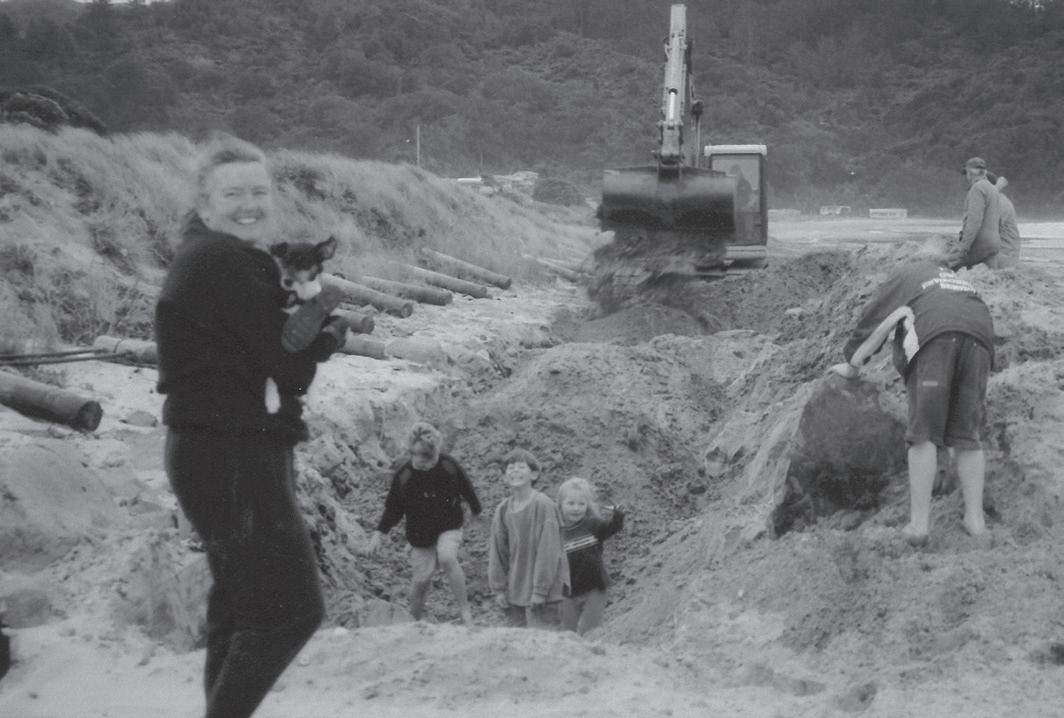
↑ Planting with BOP Polytechnic and Otawhiwhi Marae volunteers in August 2005. Bottom right: Volunteer ‘Ruth’ and some children planting at Waihi Beach in 2009. Photos: Supplied.
Bottom left: Spinafex planted in 2024.

teaching to work part-time, John was awarded a certificate for his long-standing dedication to Coast Care.
Tears form in John’s eyes as he remembers accepting the award from Bay of Plenty Regional Council and Tauranga City Council dignitaries at the special ceremony at Karewa Reserve.
“It is quite moving for me,” he says.
John has represented New Zealand in rugby and softball, and has received many teaching accolades in his lifetime because, in his words, he was good at it. But when it comes to conservation, he gets emotional.
“The passion and the work behind the scenes go unnoticed because I just do it,” he says.
“I get a sense of fulfillment out of it, so you don’t expect anyone else to notice, but they did.”
Using one of the wooden posts as his marker, John knows exactly how much the dunes have been restored, as he points to where they once were a few decades ago – a good 20 to 30m towards the water.
“The planting is phenomenal,” he says. “The progress is fascinating to see the sand dunes grow year after year. To see that growth in the last 30 years is really rewarding.”
Admiring the dunes just a stone’s throw from his home, John says he is proud of what he has achieved with the help of the local primary school children.
Not only has the programme helped youngsters learn about the importance of dune restoration, but, he says, it has helped get them out of the classroom, away from electronics, and into the fresh air.
“It is vital that young people have a strong bonding with where they are from,” he says.
“It is fulfilling to contribute to nature and the
community around you. It doesn’t matter if kids plant one or 10. It just matters that they planted a plant,” John says as he gently runs his fingers through the bright green grass stalks of a freshly-planted patch of pingao and spinifex.
Like anything good in the world, it will take time – likely years – for the volunteers who planted these native grasses to see the impacts they will have on the dune ecosystem.
It is rewarding, he says, to see adults walk along the beach and point to the plants they put in the ground as pupils themselves.
“Giving people the opportunity to give back is very fulfilling,” he says. “It is having a sense of belonging, purpose and ownership. It is exhilarating.”
Coast Care regional coordinator Rusty Knutson says the programme has been successful predominantly because local communities have a deep emotional connection with their beaches.
“We’re very lucky to live in a region, which is home to some of New Zealand’s best beaches, something I think our residents are very proud of.
“When you feel pride in your place, there’s a sense of wanting to look after it. This is where Coast Care really resonates with people because it’s a tangible way to do your part.”
In fact, he says, in its 2023 Beach User Survey, 92 per cent of respondents considered native dune plants and wildlife to be at the top of their list when it comes to the value that beaches can bring to local communities.
Looking back, Rusty agrees with John that the coastal environment is changing.
“In recent years, we have seen increased frequency and magnitude of storm events, which often leads to dune and beach erosion, and community consternation.

“Giving people the opportunity to give back is very fulfilling, It is having a sense of belonging, purpose and ownership. It is exhilarating.”

“From a programme perspective, this has meant we have made a deliberate choice to focus more on erosion mitigation and restoration than perhaps we would have liked, as opposed to a more balanced approach of erosion management and biodiversity.”
With the changes becoming more visible, more and more people are putting their hands up to help play their part in its protection.
Rusty says Coast Care hosts roughly 3000 volunteers per winter planting season, mostly from either schools and corporates, and for different reasons.
For schools, one of the most important innovations delivered by the programme has been the development of its Life’s a Beach video series and associated support materials.
“These resources make it easy for schools to incorporate volunteering on the beach into their normal curricular activities, plus our restoration coordinators are adept at making the whole event fun for the children – these events often finish with some beach play time.”
When it comes to the corporates, Coast Care’s restoration coordinators have been working closely with local businesses, to forge connections and tailor events to suit their specific needs.
These events often consist of a short educational session on how beach systems work, and what plants and wildlife live there, followed by 1.5hrs planting, weeding or fertilising, and kai on the beach.
This approach, Rusty says, has contributed
to lifting the overall involvement of the number of corporate volunteers.
“We try to make every event fun. I also think that many businesses now realise the benefits to their business productivity from this type of volunteering activity. Some of them volunteer more than once per season.”
The programme’s biggest challenge is funding all the work along the 156km of open coastline it needs to do to restore this for future generations.
“We would dearly like a long-term and significant sponsor (or sponsors) to join the programme, to ensure we can continue to meet the needs of our community,” Rusty says.
One of the biggest wins has been the long history of collaboration between the region’s coastal councils and Department of Conservation.
“That is, of course, alongside seeing so many of our community coming out to help year after year for a mostly winter programme (plants have to be planted in winter to maximize survivability in this harsh environment), and the change that we can so clearly see in our beaches.”
Looking forward, Rusty says the Coast Care programme is here to stay another 30 years.
“It ticks all of the boxes: Biodiversity enhancement, coastal resilience, infrastructure and housing protection, community spirit, and the education of current and future generations.
“Not only is it one of the longest running environmental programmes in the Bay of Plenty, it’s also one of the best value for money.”



TAURANGA ZINEFEST IS A FREE, HIGHLY VISUAL FUN FILLED COMMUNITY EVENT —— FEATURING ZINES, CARTOONS, ART PRINTS, MAKERS TABLE, ZINE LIBRARY AND MORE.


Five days after being named in the NZ Sevens team for the Paris 2024 Olympics, Sarah Hirini sat down with artist Millie Pidwell at Pāpāmoa Sports & Recreation Centre - a facility set to celebrate 30 years.

A blank canvas brought to life on a grand scale. A familiar figure in black and white. A name, a number.
Painted by hand, brushstroke by brushstroke, this mural in Pāpāmoa was slowly revealed to people passing by. They stopped to chat with the artist, standing and staring in the winter sun, commenting on the beauty and sheer size of the artwork and its progress, day-after-day, for two weeks, until it was done.
The finishing touch, white paint on black: Hirini. 5.
The mural honours local legend Sarah Hirini, one of the world’s greatest ever rugby sevens players. One of New Zealand’s greatest ever athletes. The pride of Pāpāmoa.
As a member of the Black Ferns Sevens team, Sarah has won two Olympic medals, two Commonwealth Games medals, two Rugby World Cup Sevens titles, and seven World Series titles.
The 31-year-old of Ngāti Kahungunu ki Te Wairoa descent has been a captain of the team since 2014, she was made a member of the New Zealand Order of Merit in 2019, and was a flagbearer for New Zealand at the Tokyo Olympics in 2021.
She has also represented her country in the 15-a-side game and won two Rugby World Cups with the Black Ferns.
What else is there for her to win? What could possibly come next? Paris.
The week before she flew out to France, just five days after officially being named in the New Zealand Sevens team for the Paris 2024 Olympics, Sarah sat down with local artist Millie Pidwell at Pāpāmoa Sports & Recreation Centre, a community facility in Gordon Spratt Reserve that will soon celebrate its 30th birthday.
Millie, who specialises in hand-painted murals, was about to start the largest project of her Murals by Millie career. An artwork 90 square metres in size. She had been asked to honour, through her art, a Tauranga Tiahuia – a wāhine of great prestige and talent, connected to the local area, “who is inspiring, who has a lot of mana”.
“I wanted to choose Sarah because I just think you are so empowering for women and for young girls,” Millie said.
This mural is the first of six commissioned by Tauranga City Council around the city as part of its Tauranga Tiahuia Mural Project. These murals will be revealed throughout the year and were funded by the Department of Internal Affairs through the Hine te Hiringa – Empower Women Utilising FIFA Women’s World Cup 2023 Fund.
Millie’s mural has Sarah standing strong, in her playing jersey, in her element, surrounded by nature. There are three birds in the image, symbolising community and whānau supporting Sarah on her overseas travels.

“I love birds. They remind me of home. And the pīwakawaka, I think, is quite spiritual in itself. For me, I’ve found that they naturally represent family members who have passed,” Millie said.
For Sarah, too. The pīwakawaka on her shoulder in the mural represents her mum Ronnie, who passed away in 2021. It illustrates the strong connection Sarah still feels.
“Having her alongside me, or on my shoulder, for the rest of my life is pretty special,” Sarah said.
She and her husband Conor have lived in Pāpāmoa for about 10 years now, after moving up from the lower North Island to be closer to the New Zealand Sevens base in Mount Maunganui at the Adams Centre for High Performance.
“We thought it would be a pretty cool place to live and now, for us, this is home.”
They live within walking distance to close friends and family and Sarah enjoys the strong sense of community and “small town vibe”.
“Obviously we live in a city, but it doesn’t really feel like that in Pāpāmoa, it seems so much closer, seems very tight-knit, and I think that’s why I love it so much.”
She sees the community coming together at Gordon Spratt Reserve – where Pāpāmoa Sports & Recreation Centre is located – whether it’s on a busy touch rugby evening, or during Saturday morning sport. Sarah goes for runs in the reserve with Conor,
“I think that, for me, is why I love being here in Pāpāmoa, because of the community support that you get whenever you’re travelling, whenever we’re playing.”
Opener: Millie adds the final touch. ← Artist Millie Pidwell and rugby sevens great Sarah Hirini - the inspiration behind the community mural in Pāpāmoa.
and she takes her niece and nephew there to play. She sees people out with their kids, lots of dogs running around. Families. People having fun.
“I’ve done a lot of training out on those rugby fields,” she said with a laugh.
The Paris 2024 Olympics almost didn’t happen for Sarah. She’s been fighting her way back to full fitness after an ACL injury last December, which required surgery. Against all odds, Sarah recovered in time for Paris – keeping alive her dream of competing in the Olympics for a third time.
“Just to have an opportunity to represent my country again, I am extremely proud and very, very happy,” Sarah said. “And not just my country. I know how much this community has done for our team ... we can feel the support wherever we go.”
She said people come up to her in the supermarket to say how much they love the team. That home support continues when they’re playing overseas. “I think that, for me, is why I love being here in Pāpāmoa, because of the community support that you get whenever you’re travelling, whenever we’re playing.”
From Pāpāmoa to Paris and back again. Sarah Hirini – Tauranga Tiahuia – will soon return home and see for herself, for the first time, the mural painted in her honour.
It will inspire and connect her coastal community for many years to come.

Why FaceUpTM Sculpt?
Experience the natural way to reduce fine lines and wrinkles, alleviate stress and tension, boost collagen, relieve headaches, and define your jawline and cheekbones.
Book with us today handsonstudio.nz or scan QR code.
Instagram: @h.ands_onstudio



Climate change means coastal flooding will likely get worse. Meet a coastal engineer who says that’s nothing to be afraid of, so long as we understand our options.
Ana Serrano loves the ocean. “Lakes are boring,” she says cheekily. “The ocean is all waves, currents, storm surges. Everything is moving left and right.” Her eyes light up, as they often do when she’s talking about her job. “I love it.”
From splashing as a baby in the Mediterranean Sea to snorkeling as an adult in the Bay of Plenty, the ocean has been a constant in Ana’s life — and also her career. She holds a Masters in Coastal and Marine Engineering and Management, and describes herself as a ‘nature-friendly engineer’. To speak with Ana about her work is to enter a world where the ocean acts as a restless sculptor, constantly shifting sand and shaping coastlines. It’s a force that Ana says we need to work with, rather than against. Suddenly a simple seawall seems inadequate, even short-sighted.
Ana is a senior advisor in climate resilience, working in the Climate Change team at Bay of Plenty Regional Council. She is particularly interested in helping communities respond to the effects of our changing climate as it manifests in low lying areas.
“Even in the last 10 to 20 years, people have thought they were fine to farm or live in low lying areas, but now they’re starting to suffer the impacts,” she says. Some of those impacts include erosion and coastal inundation, salt water intrusion into crop lands, and more frequent flooding. “For example, you might have a flood event that happens two or three times a year, but some models predict that just 10 centimetres of sea level rise could turn that same level of event into something that starts happening five or six times a year.”
Her nature-friendly approach to engineering was seeded at a young age when she encountered what she calls ‘bad tourism’.
“Growing up in Barcelona, my family used to holiday at Costa Daurada, the Golden Coast,” she says, recalling the half-hour walk that her family would take to get to the beach. “Each of us would carry something: food, the parasol, sun chairs, towels, snorkel equipment. Our path was mostly past quaint houses, pine trees, and through wetlands.”
But over the years, development swallowed the
landscape. “The charming houses and farms were gradually replaced by towering hotels and buildings. Nature seemed to recede. The place I grew up loving no longer felt the same. Instead it was cheap tourism: buildings and rubbish and litter. I didn’t understand how anyone could let that happen. It broke my heart to see the natural environment being so disrespected. It really lit a fire in me.”
Such a fire, in fact, that she took part in protests to protect the wetlands. “But our efforts seemed mostly in vain.”
A high achiever at school, she turned her focus toward understanding more about the delicate relationship between progress and preservation. Ana was the first generation in her family to go to university. With her deep love for the ocean, she chose coastal engineering, the engineering part coming easy for her. “I have always been very good with numbers, and at the end of the day, numbers are the same in every country.
She studied for her Masters at three different universities in England, Norway and the Netherlands, thanks to a scholarship. She says it gave her the chance to see the different ways that each country approaches coastal issues and storm surges.
“We can learn a lot from other countries. New Zealand is building its own memory of climate impacts, but people still forget. When there hasn’t been a bad storm in a while, we get a false sense of security.”
Ana says there are lots of places at risk in the Bay of Plenty. “Some people inevitably will need to relocate, even whole communities, that’s just a fact,” she says bluntly. She adds, “But it’s not the council’s job to tell the community what to do. If there is a strong attachment to a space, people might be more likely to accommodate the coastal risk. Every community has different thresholds for how much disruption they are willing to put up with.”
She says one of the most important questions for every community is “what matters most?”.
“It’s the community’s values that should guide the way forward. If you value your beach, you won’t just build a seawall. Because in 10 or 15 years, you

you won’t have a beach there anymore. So what is it that the community really values? We need to understand these values to find the right solutions.”
In 2023, Ana was part of a team offering technical advice and support to the Waihī Beach Lifeguard Service as they grappled with how to deal with coastal inundation. On top of a severe flood, GNS had identified the club as one of the most at risk in the country for ongoing inundation. Conversations with the regional council’s Climate Change team led to a funding application for climate adaptation planning. Ana says, “We were able to take them through a collaborative process so that by the end of it, they owned the solution. Not just as club volunteers, but as a community.”
The resulting adaptation plan charts a way forward for the lifeguard club, but it’s not a linear set of actions. Instead, the plan branches out like a choose-your-own adventure map that offers several possible pathways for the club to take, depending on
how the future unfolds. One pathway points towards a potential redesign of the building’s ground floor, other pathways lead to using a new hub at a different and safer location. As conditions evolve over time and some options become outdated, the club will switch to alternative pathways.
Ana says the important thing is that, after initially receiving a “scary report from GNS”, the club now has a clear idea about their options going forward, and they have identified the various triggers that will require them to take each particular pathway.
“Knowledge is power,” she says.
“That’s my favourite part of working with communities. There is lots of risk along the coast, but we don’t need to be afraid of it. We just need to know the options. It’s my job to help people understand what those options are.”
www.boprc.govt.nz
Whakairo by Kereama Taepa
Inaugural Patrons project and centrepiece to our 2025 reopening programme.

Join a group of like-minded supporters catalysing significant visual art projects.
Become a Patron with an annual membership — visit artgallery.org.nz for more details.
Words by Kristin Macfarlane

Healing is a taonga. It isn’t always pretty, but Melissa Te Kani says it can be. Over the next six months, she will take Tauranga woman on a rongoā journey of self-discovery.

Melissa Te Kani knows first hand that a person’s choices, no matter what situation they find themselves in at any point of their life, does not limit their future.
The 40-year-old mum of three has found herself in some tough times over the years, and wants to help other women in Tauranga to understand they can find a positive way out.
“If you don’t get it right the first time, it’s okay,” Melissa says.
She is a mum, a coach and mentor, an art therapist, freelance creator, author, and wellbeing facilitator. She is also a founder of the new Mama’s Kōrero, which is
what she describes as a healing journey for women that focuses on te ao Māori, identity, connection and a person’s environment.
“Everything we create comes off those values.
“It’s a rongoā [Māori healing system], that’s what Mama’s Kōrero is.”
Facilitated by Melissa, and her childhood friend Kandyss Hetaraka, Mama’s Kōrero is a space where women can openly talk about their experiences and be actively heard, without judgement or opinions - something she saw a need for in Tauranga.
The te ao Māori-inspired
journey will begin mid-August, with no more than 25 women taking part. Over a six-month timeframe, Melissa says Mama’s Kōrero will take women through a journey of self-discovery that will include an element of art therapy, journaling, life coaching, body movement, guest speakers, interactive workshops, and “some reality checks”.
“We’ll have one kaupapa for two weeks, an overview on the third week. Every month there’ll be a new whare that we speak about,” she says.
Melissa says conversations will be had that may not be easy


Melissa’s good friend Kandyss Hetaraka.

“Mama’s Kōrero will take women through a journey of self-discovery that will include an element of art therapy, journaling, life coaching, body movement, guest speakers, interactive workshops, and some reality checks.”
in a bid to help them navigate a new journey.
“It’s all about owning what your choices are.”
The aim, Melissa says, is for these women to challenge their current situations, look at their decisions and to take their mana back.
“They’re going to walk away with something - an identity of self, acceptance of everything.”
Mama’s Kōrero is an extension of who Melissa is and she says all of these have helped her in her own journey.
“I love life right now. Life for me is so good right now. My kids are happy, I’m happy.”
But this hasn’t always been the case for Melissa.
As a young woman, Melissa experienced domestic violence during a “narcissistic” relationship, and with that came isolation.
“I didn’t have anyone to support me.”
It was through this experience she discovered art therapy, which provided her with an outlet to unload her feelings at any time of the day or night. It allowed her to channel her energy into something creative.
Fast forward to recent times, through observance and conversations with others, she realised there were a lot of others
in the community who were in the same place she was in many years ago.
“A lot of it is abuse. Physical, or mental, and financial abuse.”
Traditional therapy methods are not for everyone, Melissa says, and for Māori women it can be hard to open up to people who can’t relate to similar cultural and life experiences.
This is why Mama’s Kōrero was born, as a way to help women unpack their choices and show them how to deal with them better.
“Sometimes it’s easier to talk to your own.
“We’re perfectly imperfect.”
She has a tight circle of friends who all have their own gifts that add value to her life and others’ lives.
“My circle hasn’t changed in decades. They’ve been my safe space with Mama’s Kōrero and the journey I had to get there. They’ve seen me through it all.”
Melissa says it’s important for women to understand how they arrived in their current situation so they can move forward positively. She says she has been a solo mum all her life and understands the challenges that come with trying to heal while facing parenting responsibilities.
She says it’s important for women to know their current
situation is just “a moment in your hīkoi” and while pain can be hurtful, the experiences can become your superpowers and healing serves a purpose.
“Healing is taonga. Healing isn’t always pretty, but it can be.”
Although there are some serious topics that will be discussed during the Mama’s Kōrero journey, she says it’s not all heavy.
Melissa moved to Tauranga three years ago and has loved being surrounded by the region’s natural resources, which she believes are also beneficial to a person’s wellbeing.
She and her children head to the beach each week to walk, take in the environment, and spend time together away from their everyday surroundings.
Mama’s Kōrero will also embrace Tauranga’s natural surroundings.
Women who are joining Mama’s Kōrero have been referred, or have organically found them.
“We haven’t marketed it. They find us. If they’re meant to be here that’s why they are coming”. This is how she wants to keep things for now, believing that those who find them are meant to be there.
soul_feather_collective




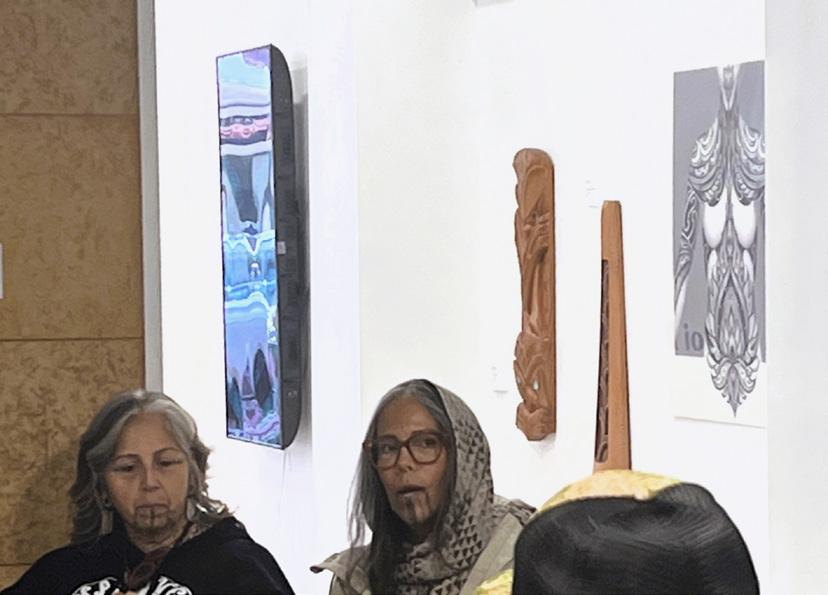










Born from one artist’s wild and wonderful visions, this whimsical tapestry of beluga whales has been awarded a top prize in a prestigious art exhibition.

A clever tapestry of beluga whales swimming in the ocean has won the inaugural Our Place magazine Merit Award as part of the prestigious Molly Morpeth Canaday Award 2024 exhibition.
Organised by Arts Whakatāne and Whakatāne District Council, the exhibition aims to celebrate the country’s incredibly diverse artists and their practices and reward those who create outstanding works.
Now in its 39th year, the exhibition opened from February to April at Te Kōputu a te whanga a Toi - Whakatane library and exhibition centre.
The exhibition featured works by artists from 495 countries throughout Aotearoa, with 62 finalists selected by three preliminary judgesDarcell Apelu, Emily Hartley-Skudder and Jeremy Mayall.
The winners were chosen by guest judge and director of the Sarjeant Gallery Te Whare o Rehua Whanganui - Andrew Clifford.
Our Place magazine celebrates the Bay of Plenty and champions its locals. One of the many ways of doing this is by sponsoring a prize in the prestigious Molly Morpeth Canaday Award 2024 exhibition.
This year, the Our Place
Magazine Merit Award went to Claudia Kogachi from Tāmaki Makaurau Auckland for her artwork named Beluga Whales Swimming in the Air.
Claudia says it was a dream that sparked her 1230mm by 930mm tapestry woven from threads of imagination during her artist residency at Karekare House in mid-2022.
Claudia and her partner Josephine immersed themselves in creating inspiration drawn from the ever-shifting coastline of Karekare - a small coastal settlement in West Auckland.
“This rug, born from dreams and the embrace of Karekare, stands as a testament to those ethereal nights and the creative spirit that thrived in their midst.”
Takutaimoana Harawira, Punga (Anchor Stone), 2022. Commissioned by Tauranga City Council.
Opposite: Murals by Millie, TSB Bank Wall Mural, 2023. Private commission. Images courtesy of artist.

↑ Claudia Kogachi’s artwork displayed at the Jhana Millers Gallery during the Aotearoa Art Fair.
← Another example of Claudia’s amazing art titled ‘Werewolf Transitioning’.
“Daily, wind dressed us in salt and waves, a symphony of constant change, whispered stories of the sea,” Claudia says about her piece.
“At night, my dreams danced with wild visions – horses in rockpools, spectral trees, and beluga whales adrift in the celestial sea.
“This rug, born from dreams and the embrace of Karekare, stands as a testament to those ethereal nights and the creative spirit that thrived in their midst.”
Unfortunately Claudia couldn’t be at the ceremony to accept her prize, but says she is truly grateful to the
judges, the Molly Morpeth Canaday Awards team, and Chris and Rachelle Duffy from Our Place magazine for the generous recognition.
“Congratulations to all the other award recipients and artists featured in the exhibition.
Thank you once again for this wonderful prize.”
Guest judge Andrew Clifford says Claudia’s mixed media ‘painting’ - in this case a rug woven with woolwas unmistakably fun and whimsical, even if they draw from personal experiences with friends and family.
“This work was inspired from
a residency spent with her partner on the wild windswept coast of Karekare, and specifically the dreams inspired by that environment. These are intimate visions that are also playful and celebratory and provide new ways to think about identity.”
Arts Whakatāne award coordinator Lynette Fisher says the MMCA Planning group and Arts Whakatāne are absolutely delighted the Merit Award sponsored by OPM went to Claudia’s beautiful work.
darklordsurfs
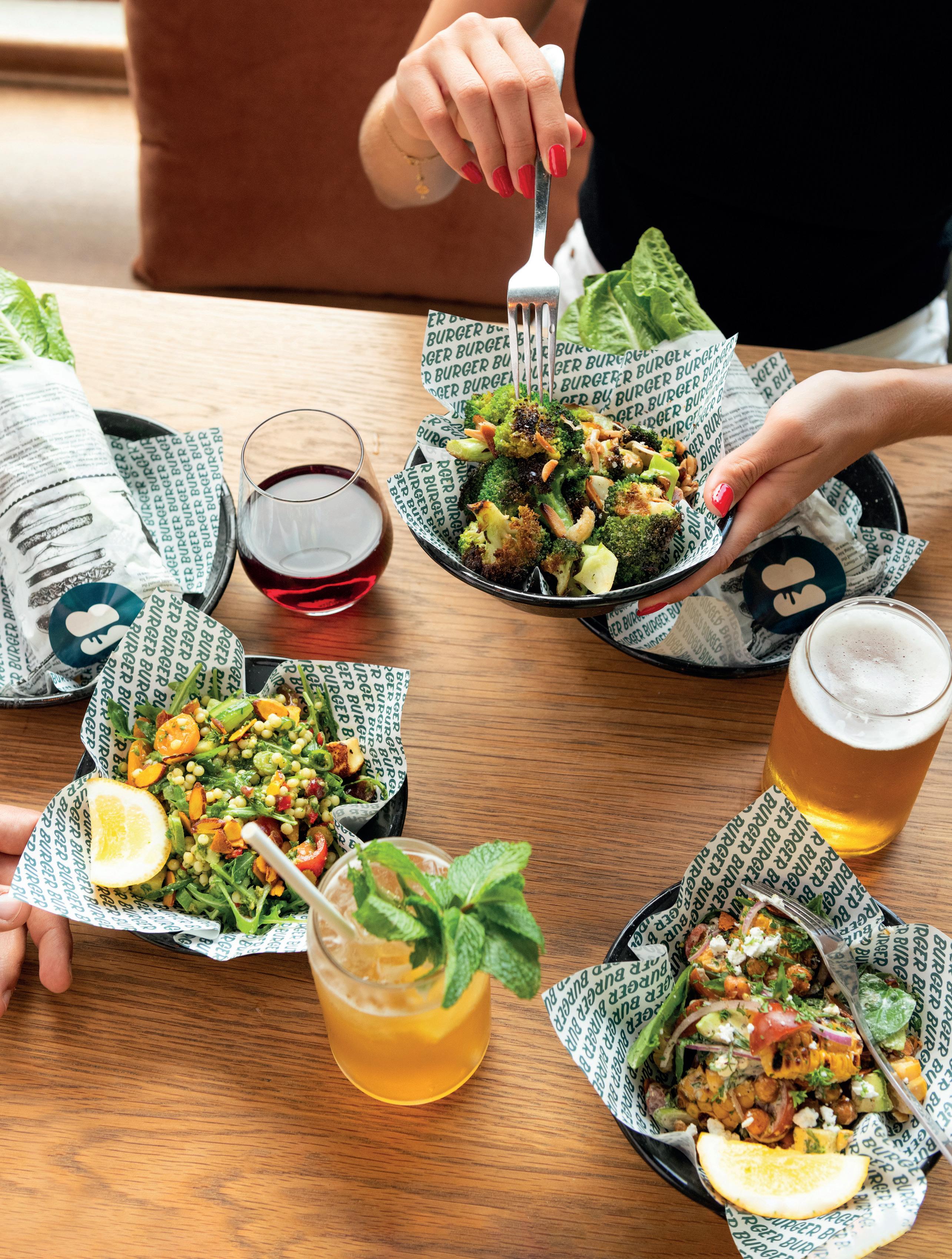
Not your everyday burger joint

Words by Anthea McLeary

Like surfing, skating is part of the Bay’s DNA. We explore the region’s rich skate history, from one of New Zealand’s only skateboard manufacturers to modern day skateparks.

The Bay of Plenty is New Zealand’s new skate capital. Well, that’s according to one of New Zealand’s top vert (vertical) skaters and life-long Mountie, Cale Tolley.
“You’ve got the biggest, best vert skate ramp in the country, only a few metres away from the newest and best skatepark in New Zealand. Plus, you have the reworked Gordon Spratt Reserve skatepark and numerous other skate facilities. Nowhere else has all that!”
World famous for its sun, sand and surf, the Bay is better known for its beach waves than its concrete waves. But thanks to a growing skate community and the development of some rad skate facilities, we’re putting the Bay back on the map for skating.
“The original skate scene in the Mount were all surfers,” says Cale, who was involved in planning for the Mount’s new Destination Skatepark right from the outset, working alongside Tauranga City Council’s project team, skatepark designer RICH Landscapes, other local skate advocates and roller codes.
“The Bay’s rich skate history isn’t that well known locally. If it wasn’t for this history, we might not have the skate facilities we do today,” he says.
In the 70s, skate fever swept the country. New Zealand’s first skateboard bowl was built in Waihī in 1976, and in 1978 the first ever fully fledged skatepark, Skatopia, opened in Auckland. Only a handful of skateboard manufacturers existed throughout New Zealand and one of them, Cahoot skateboards, was based in Totara St at the Mount.
Linda Porritt, former partner of one of Cahoot’s founders (who wish to remain private), now maintains a lot of skate and surf memorabilia, and recalls the era as an enterprising time with Cahoot making New Zealand’s first ever fibre-glass competition skateboard.
Cahoot test riders included well-known surfers of the day. Their testing grounds were the new Welcome Bay subdivisions with freshly paved

Opener: Cale Tolley shows off his tricks. Photography by PhotoCPL Above: Skating is in the Bay’s DNA.
← Since the opening of Destination Skatepark. you’ll see 100-plus kids and adults on their boards regularly.
roads. Skate competitions were held in Tauranga’s Devon Mall carpark (where Farmers now stands) and, according to Linda, were “pretty rudimentary”, using traffic cones for skaters to weave around and bars to jump over. The comps featured some of New Zealand’s first skateboarding superstars of the time, including members of the Radio Hauraki 1480 Kroozers skate team.
Some of the big-name skaters from the 1970s served as inspiration for Cale, who’s competed in vert skating at the X Games (renowned for extreme sports like skateboarding, BMX, and freestyle motocross) both nationally and internationally. His own skating career began in the heart of the Mount.
“The same year my parents built a house on the corner of Clyde St and Maunganui Rd, the Mount’s original vert ramp was built across the road (1986). When there was no surf, I was across the road skateboarding or at the Memorial Park vert ramp. That’s how the local skate scene grew.”
Since the opening of Destination Skatepark, you’ll easily see 100 or more kids and adults on their scooters, roller-skates, skateboards - people from all walks of life and roller codes – on a regular basis.
Peter Fraser, Tauranga City Council’s skatepark design lead, says modern-day skateparks support and sustain healthy communities.
“The new skatepark is helping to connect the community. It offers a great way to meet new people and learn a new sport. Having a world-class skatepark in the Bay will also help our aspiring young Olympic skateboarders by attracting both national and international skate events here.”
Cale agrees that Destination Skatepark and other skate facilities across the Bay are benefiting younger skaters, helping with quicker progression.
“A lot of tricks I learnt when I was younger seemed hard or scary because you only saw pictures of the top pros in magazines like Thrasher or Transworld. Now, with the internet, and watching older skaters or pros at the skateparks, kids are learning crazy tricks quickly and advancing faster.”
Like surfing, skating is part of the Bay’s DNA and that culture will now be preserved thanks to the acquisition of the legendary Dusty Waddell Collection of surf and skate memorabilia by the future Tauranga Museum. The collection features more than 130 surfboards and 35 skateboards (including Cahoot) and will be showcased for future generations to enjoy once the Tauranga Museum is built as part of Te Manawataki o Te Papa.
Words by Zoe Hunter

After honing her culinary career both on land and at sea, private chef Madeleine Hughes has a new recipe for success - served from where her love of food began - at the home dining table.
As the adage goes, nothing brings people together like good food. And that’s exactly what private chef, Madeleine Hughes, plans to do.
After years of honing her culinary career both on land and at sea, the 30-year-old has a new recipe for success – served from where her love of food began – at her home dinner table.
It is at Madeleine’s dining room that this interview took place.
Five placemats are set neatly around a wooden table, a silver knife and fork on either side, as well as delicate glass cups filled with prosecco. A white taper candle flickers in the middle of the table, creating a welcoming ambiance.
It is an intimate setting ready for her guests, including this writer, a photographer, a culinary connoisseur, a self-confessed foodie and close friends. While the group is an eclectic mix, they are connected by a shared excitement to taste test one of the Tauranga chef’s first Sunday Suppers.

↑ Private chef Madeleine Hughes.
← A steaming bowl of Moreton Bay bugs cooked to perfection.
Sunday Suppers is a simple concept: A three-course meal with four-to-six women who arrive as strangers and leave as friends. All it takes is two key ingredients: Good food and good company.
As we grow older, Madeleine says, it becomes harder to make genuine connections with new people.
“Friendship is special, and we could all do with more of it.”
On a random Sunday, in between her private cheffing schedule, Madeleine plans to host Sunday Suppers so local women from all walks of life can share a meal together and get to know one another on a deeper level.
“You arrive solo, and leave with a full cup and belly,” Madeleine says.
A self-confessed food lover, Madeleine has loved cooking since she can remember and it all stemmed from the experiences she shared at her family dinner table.
“My family are all food obsessed,” she says with a laugh. “My brother Sam is a beautiful cook. My mum, Rae, and Dad Tim, we all love good food.”
When Madeleine first left school in 2011, it was to study interior design, but her love of food saw her follow her nose back to the culinary industry, where she worked while travelling in London.
But that didn’t feel quite right either, so Madeleine signed up for Le Cordon Bleu culinary school in Paris, where she spent a year learning the intricacies of great cuisine, pastry and bakery.
Madeleine then took her skills to the sea, becoming a chef on superyachts for clients cruising on mostly the Mediterranean Sea.
“I loved it,” Madeleine says, “but I did miss home and I was ready to come back.”
After moving to Auckland, Madeleine began private cheffing for land-based clients and moved back to Tauranga in 2021.
Spending the last two years as a self-employed, private chef in the Bay of Plenty, Auckland and Hamilton, Madeleine has quickly learned how to cater for everyone’s changing palates and adapt in the moment.
Madeleine says versatility is vital in an industry that could see you serving a party of eight celebrating a 30th birthday one week, and celebrities the next.
“I have met some interesting people who are all so different,” she says. “Respect is big. You have to be so aware of people’s preferences and mannerisms. It is about knowing their tastes even before they do.
“It stops you being complacent.”
Madeleine has crafted her own cooking style over the years and loves to share her relaxed, rustic style with other foodies.
“I feel like I have established my own style and I am really proud of it,” says Madeleine, as she notices someone’s almost-empty glass and refills it.
“I like the more authentic dining experience. It’s elevated, but not fussy – the noise, the mess, the clatter. I love it all.”
Every menu is filled with nutritious food –something Madeleine strongly believes in – and it is different each time.
“I believe in giving people food they haven’t tasted before,” she says, as she dishes up a steaming hot plate of Moreton Bay bugs at the table.
Madeleine has deliberately placed shared plates around the table to encourage her guests to interact and socialise with each other.
“It is intimate, so you can’t peel off into separate conversations.”
Table talk can be awkward, especially among strangers, but not at Madeleine’s house. Her guests feel at ease with her calming, yet confident, nature to keep conversation flowing.
“In cheffing, I meet strangers all the time, so it comes almost second nature to me.”
But it was while creating delicious food for


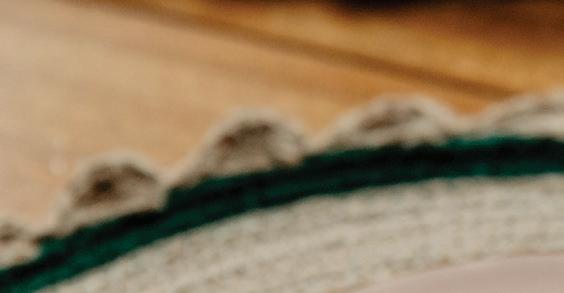

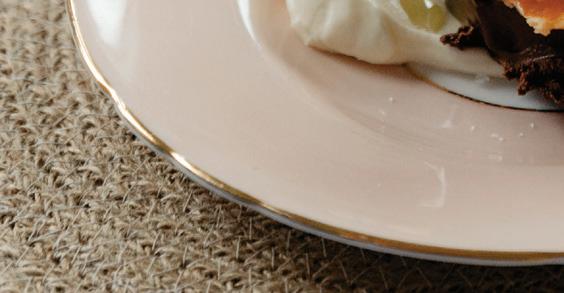



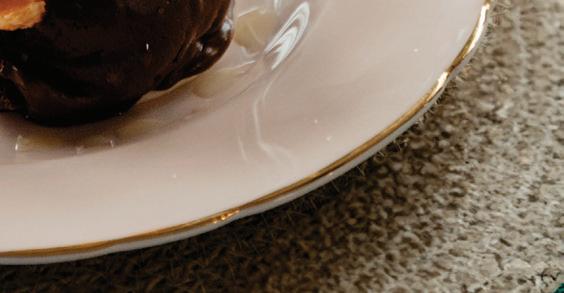

↑ Shared plates encourage guests to interact. And everyone is served a taste of the dark
people away from home that Madeleine realised she wanted to do what she loved in the comfort of her own home.
“I am doing it for other people all the time. I want to do it in my own home, with my own plates and my own cutlery. It feels like a real treat. Creatively, it is satisfying for me.”
Posting the idea of her first Sunday Suppers event to social media, Madeleine was blown away by the interest from local women.
A few days later, five women who had never met were sitting around her dinner table sharing her homecooked, nourishing and soul-lifting food.
Conversation flowed between the women. Some had moved to the Bay of Plenty from Russia, Denmark and England, and were keen to make new friends.
Just in case the chit-chat fell short, Madeleine included conversation cards with small prompters, but it turned out they weren’t needed.
“The reason I think it was so successful is because no one knew anyone, but we just found things in common. There was no agenda. Everyone was there for the same reason.
“We just laughed and laughed all night. Everyone left with big smiles on their faces.”
Since her first Sunday Suppers, Madeleine has caught up with her new friends twice.
“I would love to keep hosting things like this. It feels really satisfying.”
Madeleine will continue to update her Instagram with the dates of her upcoming Sunday Suppers, where she will ask people to send her a message including a bit about themselves.
From there, she will choose between four to six people to invite to her home for dinner.
The suppers will be ticketed ($70 includes food and wine), but Madeleine says it’s not about the money: “I do it for love.”
The groups are intentionally being kept small so people can get to know each other around the dining table.
As the main meal comes to a close, Madeleine has already cleared the tables of empty plates, which have been licked clean by her guests, in preparation for the final course: Dessert.
Drizzling olive oil above a delicious dark chocolate mousse, and adding lashings of mascarpone and mandarins, Madeleine answers questions about her menu (and switches cutlery) with ease.
All of her ingredients are seasonal and locally sourced because “it’s the food that sings its own tune”. A perfect sentiment for a pitch-perfect evening.
After a relaxed, wholesome meal, the Our Place team leaves Madeleine’s home with full bellies and a new friend in the young Tauranga chef.
@themadeleineproject

Words by Zoe Hunter
Raglan, a picturesque coastal town on New Zealand’s West Coast, might seem a world away from our base in Mount Maunganui. However, its vibrant surf culture, breathtaking landscapes, and unique community spirit resonate deeply with our values. Join us as we dive into some uncovered gems, and celebrate the stories that connect these two coastal havens.


Famous for its world-class surf breaks, scenic black sand coastline and boutique town centre, Raglan could be one of the coolest small towns in the country.
A popular holiday spot, Raglan’s population triples in summertime, but now more and more are calling the coastal town home. Residents say once you arrive it’s hard to leave the easy-going lifestyle in this “little haven”.
According to the latest Census data, more than 3800 people now live the laid-back lifestyle west of Hamilton.
Sam Mathers is one of those locals. Born and bred in Raglan, Sam has solid family roots in the small town.
While he has lived and worked all over New Zealand and abroad, Sam says Raglan always kept calling him back and nine years ago he put down roots of his own when he made the move home.
“Whenever I would travel or move away for short stints at a time, I always had a family home here to come back to.
“You learn to miss Raglan and appreciate it so much more when you travel. You realise there is no better place to call home.”
Sam is drawn to Raglan’s “simple” lifestyle and finds much of his artistic inspiration in the charm of
his hometown.
“I like to be surrounded by nature and the ocean is very important to me. I need to know there is water at least close by. I feel trapped or suffocated if the ocean isn’t close.”
Ultimately, he says, the surf was the “big drawcard” that encouraged him to start a business there. “Being able to surf good quality waves on my doorstep is a key factor. Raglan is also close to the East Coast beaches and a short drive to Hamilton and Auckland.”
With his unique and abstract art highly sought after by collectors both nationally and across the globe, Sam is often pulled away from Raglan, but says there is no better feeling than returning to his little piece of paradise.
“It’s hard to explain, but it brings a sense of relief; a relaxing feeling like you’re at peace again, away from the busy world and into a little haven.”
Growing up, Sam remembers skateboarding into town, hanging around the local Duck In Dairy, eating lollies and ice creams for just 50 cents.
Young Sam would wait outside the shop until closing time for the free pies – apple and icing sugar was his favourite – and he would hitchhike out to surf at Manu Bay until he got his driver’s licence at age 15.
“Those were the good days,” he reminisces.

Opener: Ben Grant and his family have called Raglan home since 2024. Above: Sam Mathers’ artwork. ↖ Sam Mathers, who was born and bred in Raglan, says there’s no better place to call home.
Over the past four decades, Sam has seen more and more people settling in the seaside town, commenting that it seems to be mostly young families in their 30s and 40s who are making the move out west.
“There has been a significant increase of tourists living here now, due to the quality of surf and easy van living. No one wants to leave.
“There is still a small percentage of the true locals living here, but a fair few of them have moved away, due to the housing prices and living costs have increased dramatically.
“The summer months are crazy. With visitors it can go from 3000 people to 10,000 people very quickly.”
Corrina Wells has lived in Raglan since 1998.
Having previously owned Orca Restaurant and Bar with her family, Corrina opened Raglan Artisan bread in 2019.
“I love providing a service in our community,” she says.
“This business had real potential as it suits our local ethos, with all the health benefits of handmade sourdough, no added nasties and no plastic packaging.”
So when former owner and founder Jenny Carter decided to sell, Corrina saw an opportunity.
“I had the privilege of working with founder Jenny to grow her lovingly created business into my future vision. We continue to create handmade artisan breads, and are excited by our alwaysexpanding range.”
It is the people she loves most about the town.
“Regularly seeing familiar faces gives a feeling of belonging to a group of people who check in and really care about each other.”
And of course, she says, the ocean. “Just knowing it’s there whenever you want to enjoy it, or need it, to clear some space.”
Corrina’s favourite early memory is working at the Raglan Harbour View Hotel.
“Many core friendships and relationships were cemented over the bar in this iconic pub.
“If the walls of this place could talk it would make an amazing story.”


It was 2007 when extreme windsport enthusiasts Matt and Rebecca Taggart moved to Raglan.
“We decided to move here to be close to my parents, who were based in the Waikato, and we were ready to start our own family,” Rebecca says.
After years of working abroad and establishing world-class kitesurfing brand Ozone, the adventureloving couple decided New Zealand would be a great base to start their next journey.
Originally from the United Kingdom, Matt immediately fell in love with Raglan – not only for its famous surf, but for the flat-water harbour entrance that offered great kiting.
In 2019, they decided to make the move even more permanent by opening a cocktail bar and restaurant: The Iso Bistro Raglan.
“We have always been big foodies, so we decided to create a place where we could bring our family and friends together, to create fun, laughter and good memories around the table,” Rebecca says.
Matt says Raglan is filled with a melting pot of creative minds and passionate people who think outside the box.
“It has a stunning coastline, the strong presence of Karioi Mountain, and a community spirit that can’t be beaten.
“Global travellers arrive here for the surf, but end up falling in love with the creative energy and

our passionate community.”
The couple shares many good memories in Raglan and Rebecca says they all have one thing in common: “They always involve the simplicity of being in nature, having a moment to reflect with a long beach walk, or sitting and watching an incredible sunset.
“I also love being out, listening to our talented musicians and being surrounded by truly good people.”
Meanwhile, Ben Grant and his family have called the west coast surf town home since early 2014.
The husband and father-of-two runs a bespoke cabinetry and furniture business – Wood Works Raglan – as well as his own studio where he sculpts solid timber into unique furniture pieces.
He is also a part-time educator at Aotearoa’s leading furniture, woodworking, and design school, Centre for Fine Woodworking.
“Starting a business in Raglan was a way to give myself flexibility around my family. My wife was studying in Auckland and so being available for my kids was really important to us.”
It also gave him the chance to spread his wings creatively.
“Raglan is not short in the creative crafts department and I was concerned at first my skill set
“People blend really well here. Young, old, locals, and travellers. This really is a testament to our community.”

Above: Ben Grant runs a bespoke cabinetry and furniture business, sculpting solid timber into masterpieces. ↖ Clockwise from left: Lunch is served at the Iso Bistro; one of Ben’s wooden masterpieces created from his Raglan studio; Rebecca and Matt fell in love with Raglan’s harbour for its great kiting.
might be oversaturated in such a small town.
“But I have never been short of work since I’ve started. It’s incredible how supportive our community is of our local businesses.”
Raglan has an “extraordinarily welcoming” community that is thriving with community events, markets, talks, groups, collaborations, he says.
“It’s impossible to keep up with all of it. There really is something for everyone here, which brings people together. Community is definitely one of Raglan’s defining aspects that I love.”
Some of Ben’s best memories of the last decade have included Sunday markets, the skatepark, and Maui Dolphin community days, a collaborative community festival highlighting the endangered Māui dolphin and the importance of Raglan’s marine environment.
When Ben and his family moved to Raglan, people would often say how its demographic was
changing. Certainly, he says, there has been a difference in the town’s make-up over the past 10 years, but the town’s “vibe” has remained.
“People blend really well here. Young, old, locals, and travellers. This really is a testament to our community.”
Jenny Watts has lived in Raglan for 14 years and has never stopped falling in love with the place. “I love it more and more each year I’m here,” she says.
For the first two years, Jenny and her husband lived in a tiny 10m2 sleepout while they built their “dream” home on their “dream” section.
“We had our first son during this time before our main house was ready to move into,” Jenny says.
“It seemed hectic at the time, but looking back, it was such a simple way to live, connected with the

Tesh Hearth (nee Randall) began experimenting with vegan coconut yoghurt almost 10 years ago. Now, from their purpose-built factory on the outskirts of Raglan, the company sends their yoghurt worldwide.
land. Those are great memories for me.”
Her favourite thing to do is wake up at first light to surf the points and watch the sunrise.
“It’s a great way to start the day,” she says.
Seeking out the surf and the lifestyle, Jenny soon saw the potential for an innovative, holistic approach to hands-on physiotherapy treatment that focussed on Pilates and surf rehabilitation.
So, she opened The Physio Room.
“We have an amazing team of highly-skilled physiotherapists that have special interests in Olympic-level surf training, women’s health, hand therapy and sports injuries.”
While she loves Raglan most for its surf, Jenny says the community is also very special.
“I feel I know most people in the community and consider them friends. It’s such a supportive place to work and live.”
And not everyone in Raglan is a surfer, she says with a laugh.
“There are many foreigners who are attracted to the alternative lifestyle, and a lot of professionals who commute to Hamilton, but are looking for a beautiful place to live in.”
There has also been a “huge shift” of more Aucklanders who are able to work from home, Jenny says.
“Underlying all of these groups are the old family names that have been in Raglan since
missionary days - and there’s also a strong Māori population that has been here before them.
“Raglan is such a varied community.”
In her words, Tesh Hearth (nee Randall) is almost ready to qualify for “local status” after calling Raglan home for the last 12 years.
When her business partner Seb Walter went dairy-free due to allergies, Tesh began experimenting with vegan coconut yoghurt and spent time perfecting the recipe. Word soon spread about the coconutty-goodness in a jar and now, from their purpose-built factory on the outskirts of Raglan, they send their yoghurts and kefirs world wide.
Tesh says their business, Raglan Food Co, started itself to an extent.
“It is all thanks to there being so much local support and interest in the product after I put a post on the Raglan Noticeboard Facebook group offering a couple of jars of coconut yoghurt for sale,” she says.
“I think that’s reflective of the openmindedness of the community here and how keen people are to show support of environmentallyfriendly products and services.”
Tesh has lived in a few different cities around New Zealand, but, she says Raglan is by far her

favourite for many reasons.
“It’s small enough that it feels like home and you can get to know everyone, but it’s still big enough to attract a really diverse range of people and have lots of things going on.
“We have vibrant markets, beautiful beaches, peaceful native bush to take our dog for walks, and gigs, festivals, and art events that make it a destination for visitors.
“Raglan is a place that’s very connected to nature and community, and that makes it a special place to live.”
Back in the day, Tesh says, Raglan was a true hippie town full of surfers, artists, and people living off the land.
“I think over the past 10 years, there’s been an explosion of people moving here from Auckland, Hamilton, and overseas, which has created a very diverse demographic.
“You’ll find everyone from retirees here for the quiet life, to young families, entrepreneurs who want to work from home with the flexibility to surf when the waves are good, corporate types who commute

Mike Renfree, pictured left, and his partner Simone Downey arguably have the best job in the beachside town: working with chocolate. Eight years ago, he brought his love of chocolate to Raglan.
over to Hamilton or even Auckland during the week but want to be here for the weekends, Māori whanau who have lived on this whenua for generations, and people from all around the world who are drawn to pursuing a path of yoga, art, permaculture, or music.
“That’s one of the great things about Raglan, how diverse the demographic is.”
One of her favourite memories has been, of course, getting married last year in their home garden. “I look forward to creating plenty more memories in Raglan over the years ahead.”
Mike Renfree and Simone Downey arguably have the best job in the beachside town: working with chocolate.
Chief chocolate maker Mike’s interest in chocolate making evolved after a lifetime working as a chef and food technologist. Eight years ago, he brought his love of chocolate to Raglan.
Commuting to Hamilton for work was okay for a couple of years, but the pair found themselves
“It is changing all of the time, but the iconic surf culture and Māori culture, plus environmental, alternative and creative vibe is strong, and is what makes the place so attractive.”

wanting to spend more time in Raglan.
So, they decided to quit their city jobs and go full time with Raglan Chocolate.
“It’s an amazing positive community that is very supportive of new ventures and was a major inspiration for the change.”
Since moving to the town, Mike says he and Simone often have what they call “Raglan moments”.
“It’s like when you pop into town to grab a coffee or go to the Old School Market and end up having random, but meaningful, conversations with old or new friends, lose track of time, and come home with your ‘cup full’.”
His favourite moments are “anytime, anywhere”.
“Everyday I jump in the water, and all the stress just falls away.”
Mike says the town’s demographic is growing.
“It is changing all of the time, but the iconic surf culture and Māori culture, plus environmental, alternative and creative vibe is strong, and is what makes the place so attractive.”
Sarah Marshall has lived in Raglan since 2013. Despite moving away twice - once to Waihī Beach for
1.5 years and another to Pāpāmoa for a year - she’s always come “home”.
“I missed the Raglan community and creative lifestyle,” she says.
“Raglan is creative in every sense of the word. I love that the majority of raglan live a creative life, from the obvious; painting, music etc right through to the creative ways people align their lifestyles with the surf or living off grid.”
Sarah also loves the accepting nature, give-ita-go attitude, and the feeling all ideas are worthy.
“Pushing the boundaries of the ‘norm’ is a way of being here.”
Raglan’s music culture is another love of Sarah’s.
“We have been super blessed to be witness to one of the most prolific music scenes in New Zealand, the YOT Club. A place that will live on in the hearts of many thanks to Andy Meek.
“I have spent many a night unleashing my wild and passionate love for music on the dance floor and from behind the decks DJing as Gypsea and also in our live electro dub band ‘The Bad Olive Project’ alongside the masterminds of the project, Maida Barker and Felix Larsen.”
As a “multifaceted” creative, Sarah’s business Gypsea Kids reflects this.
by Mia Smith
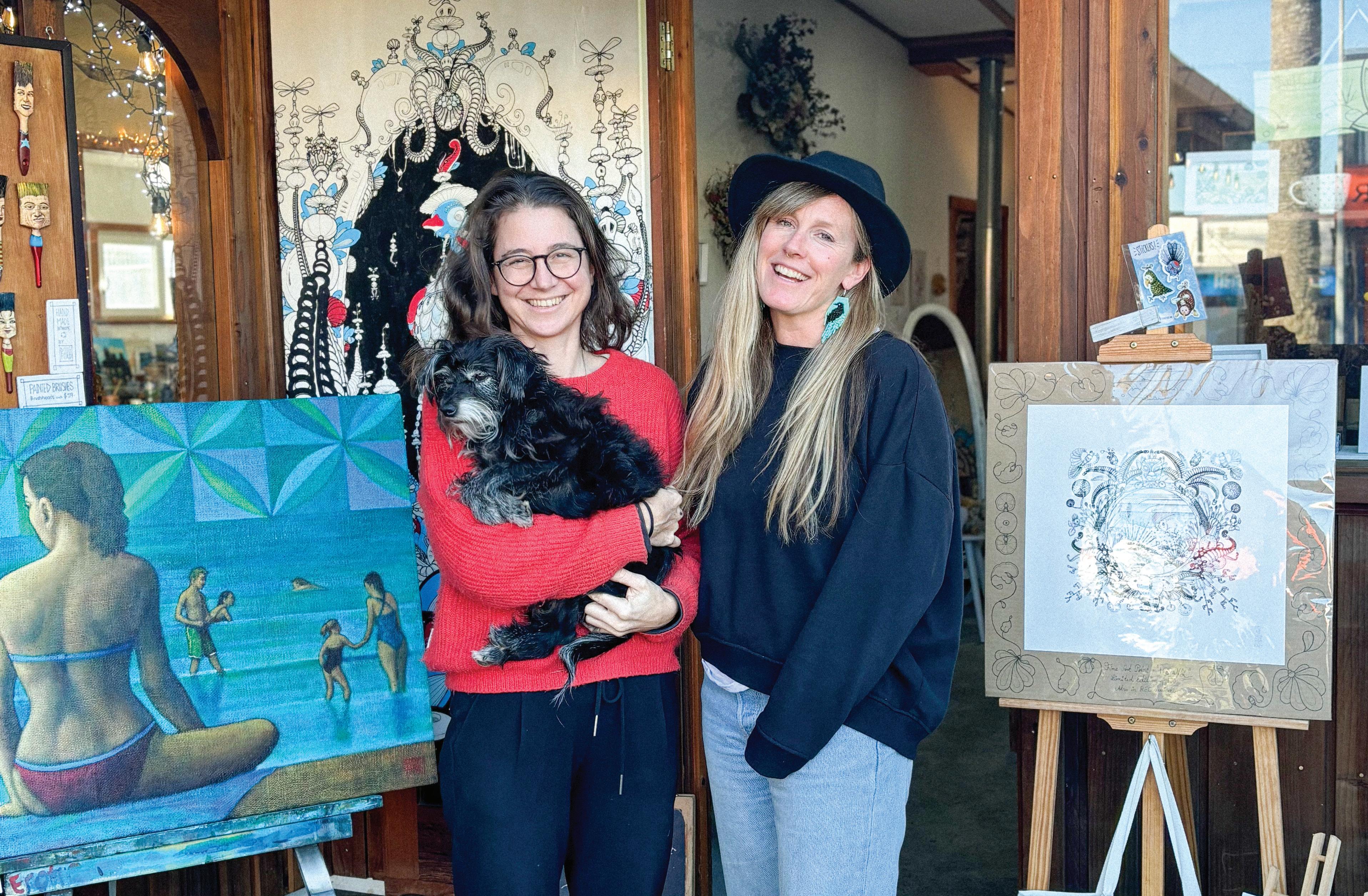
is a “multifaceted” creative and loves
The Gypsea Kids is the all encompassing name for the different avenues of creative income, including illustration, kids art classes and DJing.
“The Gypsea kids comes from being a solo mum of six kids, with a love for exploring the world we live in, and all it has to offer, with my kids in tow.”
Gypsea Creative covers her week-day job running after school art classes, as well as illustrating, and painting beautiful artwork to sell at a Bow St gallery run by her friend Denise Fort.
Gypsea Music sees Sarah - or DJ GypseaDJing gigs at one of her favourite spots, Iso Bar, or travelling around New Zealand as far as Rakiura with the “wild and wonderful” Sweet Mix Kids.
“That is always an adventure I am super grateful for,” Sarah says.
Sarah has also collaborated with fellow musiclover Teresa Michels to start Bangers for Breakfast, which is an early morning rave from 7-9am in Raglan that will be run once a month.
“Our first one was an absolute vibe and we all can’t wait for the next one. There is something a little wild and magical about starting the day with a rave.”
Creating a business out of her passions was a
natural progression.
“I’ve always been a passionate illustrator, and music lover,” she says. “As a solo mum of six, with five kids still at home, the usual 9-to-5 work structure just doesn’t work for me or my babes. My brain just doesn’t work that way either.
“Multiple avenues of income and passionate outgoing energy just makes sense. I can work around my kids’ needs and my own creative ebbs and flows.”
Raglan is full of little treasures.
Situated between the Raglan township and the world-famous surf breaks is one of those treasures: Rock-It Kitchen.
Inside a repurposed wool-shed and overlooking rolling green hills among toi toi and mānuka, the locally-owned craft beers are pouring, and the locally-grown coffee beans are roasting.
It’s also where many Raglan residents have tied the knot, celebrated their birthdays, or corporate events.
Whatever the reason for visiting, it seems there is something for everyone to see and do in Raglan. Whether you’re a local, or just visiting, it is a perfect little piece of paradise.





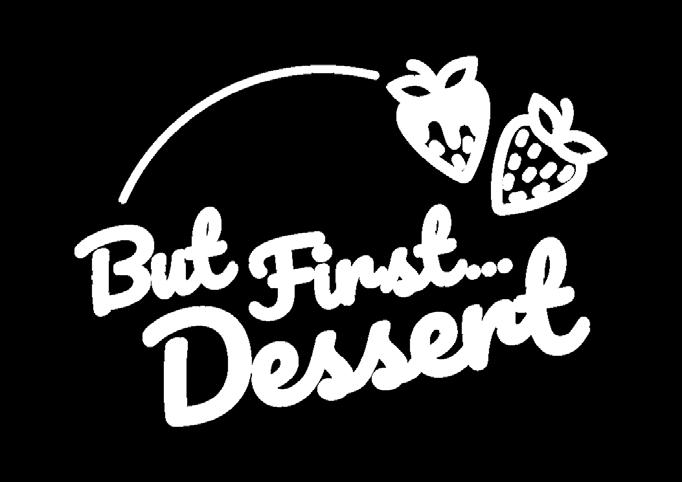
Words by Tess Matecki and Taska Kemp-Green. Photography by ilk
Our Place, together with economic development agency Priority One, has launched an inaugural student-led column, giving a platform for aspiring writers from local schools to share their creativity and talent. In the first issue, Tess Matecki gives her experience of Aotearoa’s Māori culture as a French exchange student, while Otumoetai College’s Taska Kemp-Green writes a poem from her perspective as a pākehā living in a Māori world.
The sound of her voice pierced the heavens, shaking the ground I was walking on. Her Karanga (welcoming call) emerged deeply from within her heart. It was as pure as the earth, as she was taking her energy directly from the sun. Her greeting warmed the cold air of July, making my first day at Oūtumoetai College engraved under my skin. My body felt her power, felt her deep pride for being rangatahi Māori, of being, what I learned later, tangata whenua (people of the land).
From where I was standing, I saw a group of 20 students dancing and screaming in the whare. I remember my heart beating 10 times faster, as I looked at their passionate faces, and their tongues sticking out. Should I be scared? Grateful? Sad? I remember just smiling at them, thinking it was the most polite response. I feared them, yet admired their bravery, and was envious of what seemed to be a knowledge I could never understand. The urge to learn more about this culture has never left me since this first encounter.
I started taking the Te ao Māori class at the beginning of my exchange and immersed myself in a culture of union, of sharing, and embracing our living earth. Reuniting among each other, and our whānau, was always the purpose of an assignment. I remember last year cooking hāngī, this traditional dish where the meat melts under your tongue, where the flavour seems to come directly from the soil of the ground. I invited my host family and welcomed them with a pōwhiri. I sang and danced, and it felt like home, like a place I was destined
to be. Every morning, I am imbued with this feeling of gaining more knowledge about Māori culture, about the language, values, rituals, and beliefs. Especially by being in Poutama (Māori form class), where it is an immersion experience, which filled my exchange with haka, karakia and waiata - something I will never forget.
I hope everyone has the opportunity to experience Māori culture the way I have, the way it has changed my perspective about the indigenous culture of this country, and has sparked a passion that won’t stop growing. I will carry this culture back home in my kete of knowledge, pursuing my learning through books and sharing my passion among the ones I love.
During my exchange, I became part of the Ruamano committee, the Māori and Pacifica committee of the school, organising events around the culture. For me, it has been the turning point of my learning experience, where I can finally take part in sharing a culture I cherish.
I stand now in the whare, among those who were first strangers, my hands waving, my body sweating and my voice trembling, performing a pōwhiri to welcome new students into our school. Smiling, I swivel my head from right to left, realising I am now on the other side. I screamed louder to express the joy that filled my body and danced quicker and harder, as each of my movements was the last.
Looking back, I am proud of what I have achieved, of what I have learned, proud of seeing this unique culture being shared among those living in Aotearoa.

Haere mai
Haere mai
Haere mai e!!
A moment shared in a world overflowed by culture, Bare your teeth I say. Deconstructed by segregation and greed, An obligatory need.
Tūturu ō whiti whakamaua kia tina, grab on and unite us… tina!
Haumi e - bind, Hui e - gather, Taiki e! And set forth!
Allow these words to spill like soap, Scrubbing you of discriminatory ignorance, Let them open your soul to hold the knowledge of the gods in your hands, And grant you freedom from your prejudiced ways. Show displays, of learning of growing of trying.
A Pākehā living in a Māori world, Pale skinned, blue eyed, with blonde hair, Yet accepted by those who bare their hearts freely. The meaning of whakawhanaungatanga, embodied by those of Aotearoa’s pride; Māori.
Take your kete o te wānanga and fill it with that of mātauranga Māori. Let us bridge the gap between the cultures in our country, Let us exist as one. As I,
Let this culture love you in the way rain romanticises life,
Allow the sun to plant a seed of revelation deep within you. Nurture that seed into a sapling. Allow its roots to outstretch toward Papatuanuku, And let its flowers blossom into Hibiscus and Kōwhai. Grant these petals to unfurl in Ranginui’s grace, And bathe in the light of Te Rā herself. Let the seeds of your own flowers be carried across the wind, spreading to instill in those around you.
Never allow your roots to wear thin, or for your flowers to wilt with ignorance. Grasp what is already yours.



Creative Bay of Plenty, in collaboration with Choru s and The Breeze Tauranga, invites artists to participate in a paid opportunity to beautify our civic spaces.
Transform telecommunications cabinets into vibrant canvases. Contribute to our region’s identity and help foster community spirit.


by Millie
Words by Sarah Adlam Photography by ilk
The final school year is busy for many students. Year 13s have the extra task of deciding what career pathway to follow. Mount Maunganui College’s Sarah Adlam speaks to fellow classmates, and a local career expert, about how to make this all-important decision.
“What do you want to be when you grow up?”
If high school students had a dollar for every time they were asked that, they would almost be able to afford their university degrees. But finding the answer to that question is hard.
At Year 13, students are faced with the daunting task of creating their career pathways - as if surviving NCEA, extra activities, first jobs, and first relationships isn’t enough.
With New Zealand’s housing crisis, rising cost of living, and labour shortages, creating a career path that manages to combine your passions and talents with stable financial gain can be tricky - so is navigating which jobs require the right qualifications.
A survey of Mount Maunganui College’s 2024 Year 13 cohort revealed roughly two thirds of the 26 participating students plan to attend university after graduation.
However, university can be a great financial burden for students who are already trembling in the face of following the expected lifestyle of buying a car, a house, and then potentially starting a family.
This makes their decision even scarier, because they know they are looking at spending thousands of dollars just to earn a basic degree. So, it becomes more important than ever that they pick the right degree for the right career. But what exactly is the ‘right career’?
Is it one that makes you happy and excited to go into work each day? Or is it one that keeps the money rolling
in, covers the cost of your student loan, and will eventually pay the mortgage?
The survey of Mount Maunganui College students revealed the majority of Year 13s are selecting career paths based on what they are most passionate about, rather than the financial rewards the job offers.
The Tertiary Education Commission’s (TEC) latest survey of Kiwi school leavers in 2020 revealed 50.4 per cent chose one of 11 careers as their preferred pathway: engineer, lawyer, businessperson, teacher, builder, police officer, doctor, scientist, mechanic, or nurse.
But perhaps the biggest challenge students face when leaving school is the idea of having to decide their entire future right then and there.
Miriam O’Connor, career consultant for Career Solutions Ltd and Ministry of Social Development’s Connected Bay of Plenty, said students today are often overwhelmed by the amount of information available online about career options.
“This makes it hard for some who are uncertain to know where to start,” Miriam says. “Students are aware of the advances in technology and have uncertainty about how this might disrupt future career choices.
“They are also aware of the current economic challenges, so many feel the pressure of making the right decisions to ensure they can earn a liveable income and/or afford to study or gain qualifications in the future.”
Miriam says some students have pressure to succeed and meet others’ expectations, while also

achieving work-life balance and doing what they enjoy.
“Many are concerned about environmental and social issues and wonder about how in the future they can contribute to improving the world for everyone.”
The idea of choosing one particular career pathway is a “really big decision” and can result in anxiety as the end of school approaches, Miriam says. “They fear making the wrong decision.”
The final school years, Miriam says, can also be pretty full and busy for many students with leadership roles, NCEA, and other commitments such as sport, and part-time jobs.
“So these years whip by quickly for many who feel they don’t have enough time to think about what they are going to do when they leave school.”
Miriam encourages students to look at their first steps out of school as a new beginning and realise their career pathway is unique to them.
“Yes, the decision about what they will do is important, but most often it isn’t life defining - it is another step into the adult world where they will continue to learn, build skills, grow experiences, mature further, and as long as they are following their interests, skills and strengths then that will be a good start.”
In the current economic climate, Miriam says, the job market is tougher now for young people new to the workforce than it has been for many years with a high number of applicants for fewer roles.
“The good news is that the job market will bounce
If you’re seeking career advice, here are some places Miriam advises you to look.
→ Careers.govt.nz
→ Connected.govt.nz
→ Techstep.nz
→ 80000 Hours
→ High school careers departments
→ Polytechnic and university websites
→ Private career practitioners
→ Trades and Training organisations
→ Family, friends and networks
← Sarah Adlam wants to create a future that is enjoyable, challenging, and fulfills her passions.
back when the economy does,” she says.
“It’s a challenging time, but there are many things they can do to help themselves.”
Miriam recommends students access information about the world of work from mentors, teachers, career advisors, family networks, friends, and online to build their knowledge of what opportunities might be out there for them in the future.
High school students can attend career expos, and take opportunities for part-time work, internships, work experience and/or voluntary work to build skills.
“It is important for senior students to be proactive with their own research in areas of interest to them, and that might fit well with their abilities and strengths,” she says.
“I recommend senior school students keep an open mind, be proactive and intentional in gaining experience and knowledge, which can lead to discovering a fulfilling career path, and one that uniquely suits the individual.”
As a Year 13 student, I don’t know what job I will have when I am 20-years-old, let alone 30 or 40. But that’s okay. I don’t need to know how my future’s going to pan out just yet.
Like my fellow school leavers, I just need to remember that I want to create a future for myself that’s enjoyable, challenging and fulfills my passions. Then, I have to trust that if I work hard and take opportunities, I’ll create the career that’s right for me.

Scan QR code to experience via cityartwalktga.stqry.app
Download City Art Walk Tauranga for free Google Play or App Store Follow @cityartwalktga
Featuring Come along & enjoy! Presents

Saturday 21st September 2024
9am – 2pm
Greerton Village School Gala
Thrifted Finds
Custom Car Show & Auction
Music
Street Performers & more
Words by Cherie Metcalfe

Our culinary queen puts dozens of the little Kiwi staples to the test, judging their levels of cheesy, buttery, and salty goodness. Which will she crown the best scone in town?
Cherie’s
Welcome to our official 2024 Cheese Scone Awards!
In a competition filled with controversy, I discover what actually classifies as a cheese scone. Is the butter amount as important to everyone else as it is to me? Am I the problem when it comes to seasoning in a scone, or do most scones need to up their salt game?
I’ve had to make some big calls, some of which will be hotly debated, but therein lies the scone competition judging criteria.
A cheese scone can be cheese, plus one other thing in the title. Anything more, and it’s classed as a savory scone and not in the comp. (E.g cheese and black pepper, yes. Cheese bacon and onion, no.)
Butter amounts are assessed in the judging, as is the method of heating, the visual appearance, the taste and the texture. I’ve tasted 24 scones across the region and included the most popular submissions below. Sincere apologies to any I’ve missed, there are only so many long blacks and cheese scones one gal can consume in a day, but I’ve given it a good nudge.
Beautiful wee scone, with a lovely amount of cheese, golden colour, with no additions of spice or onion.
Cute butter parcel, hand cut and wrapped. (Not quite enough, as per)
Heated in the microwave, not my favorite technique if we are being fussy, which we are.
Smaller than most scones, but they certainly haven’t skimped on the cheese. A pinch of salt and this could be a front runner for the best of the best.
7.9/10
Blended Deli & Eatery - Pāpāmoa
Cheese and onion scone, packet of PCU butter. In half lengthways, toasted lightly on sandwich press, perfectly warm, not squashed. Very fluffy and light - very soft. Desperately needs salt. Served with a tomato chutney, which was a nice touch.
Texture? Perfect. Flavor lacking in something, more cheese? Close, but no cigar! Gosh they do a great brekkie sandwich though, I must say!
6.8/10
Pearl Kitchen - Pāpāmoa
Cheese scone (had red onion in it), warmed but not toasted. Decent slice of butter, perfect size. Red onions bring a lovely sweetness, but it
complements the flavour, without being OTT at all. Nice chunky onions and well spiced. Good amount of pepper and a pinch of something spicy building in the back of the pallet. Light, fluffy and soft. After all my whining about things not having enough seasoning, this one bordered on too much with the (what I’m guessing is cayenne pepper). Needs more cheese, or stronger cheese flavor. But all in all, a good solid scone.
7.3/10
Special Mention Cafe - Mount Maunganui
Visually amazing looking scone. Has a nice red tinge to it, bringing paprika vibes, which is a nice start. Crispier than other scones, firm crispy bite, crispy cheese on top and bottom.
Lovely surprise of jalapeño pops and nice fleck of herbs. Majorly lacking salt to bring out flavor all together. Butter amount? Standard, about enough for 3/4 of the scone.
6.8/10
Rise
Very pale scone - starts off very light and fluffy inside, but as we continue it has ended up too light, very doughy in the centre.
Very mild flavor - not particularly unpleasant, but not bringing anything to the table either.
4.9/10
Perfectly toasted on a sandwich press. Very simple and classic cheese scone. Great texture. Presentation and butter amount is good. Really needs some salt. I suggest a pinch of pepper, but she’s a simple classic. Not a bad scone. I appreciate they butter if it’s takeaway, so you can eat it in your car.
7.5/10
Cheese and relish scone.
A lovely scone packed with flavor from the relish, and lovely big lumps of cream cheese. As the title of the scone is cheese and relish scone, it slips into the category. But the lovely lumps of cream cheese push the boundaries too far out of the realm of the OG cheese scone. It’s a big rectangle shape, with a different texture.
I thoroughly enjoyed this scone, but I’m also

disqualifying it, as cheese scone purists would have a wee hissy fit I would think.
8.5/10
Eddie’s and Elspeth - Mount Maunganui
Cheese scone with blue cheese.
This scone is a bit flat at first glance, but lovely and golden with a tiny telltale fleck of green onion.
I’m aware this is pushing the limits of the competition, but this scone is EXCEPTIONAL. The blue cheese acts as more of a seasoning here, so even blue cheese haters will enjoy this.
Generously buttered and perfectly seasoned. A rare and unexpected gem.
I’ve even minused a point here for not being standard in the type of cheese used.
8/10
Wildflower/Soul Bowl - Mount Maunganui
Cheese and rocket scone. I got very excited by the nice seasoning at first, but sadly followed by a baking powder aftertaste. I thought I might have got it on a bad day, so I went back twice and found the same problem. A shame, as this one was highly recommended. However, consistency is key and this
scone was like a great night out: Fantastic at the time, but followed by a bubbling sense of dreadful ‘hangxiety’ and a touch of regret in the morning.
5/10
Blondie - Mount Maunganui
Cheese and jalapeno. Nice, fluffy, light triangles, and a good size. Cheese on top and crispy cheese bottom, with a tingle of heat from the jalapenos. It’s a very good scone.
I also tested their cheese and rocket scone. Nice triangle, again nice, soft, moist and fluffy. These are very good scones. Just a little pepper from the rocket, and needs salt, but a very great looking scone. The two PCU of butter is nice, although not environmentally woke.
Rocket: 8/10
Jalapeno: 7.4/10
Elizabeth Cafe & Larder - Tauranga Cheese scone.
Perfect texture, classic cheese, very light and fluffy. Excellent cheese flavour. You can tell this is a grated Mainland Tasty and not a cheese blend.
Lightly toasted and buttered to takeaway. It’s golden and nicely aerated - a very good scone. I’m running out of words to describe scones here. It’s up there with the top of the classics, and best in the CBD for sure. 8.5/10
Cheese and bacon scone, fun!
Toasted golden, lashings of butter. More expensive than others, but it is a full meal size, with a solid bit of bacon, so the price is well and truly justified. Stunning, however, the bacon flavour really overtakes the cheese and the lush smokey fattiness has carried throughout, which is DELICIOUS, but probably can’t be counted as a cheese scone. 9/10 - but disqualified, in the nicest way possible.
Classic cheese, toasted golden and lightly buttered. It’s a little bit more dense (but not in a bad way), and small in size, but very tasty. Perfectly seasoned. This scone’s a real underdog! I can’t fault it. This was the top pick from some of the Pepper & Me office staff. 8.5/10
Cheese and black pepper scone. It is the cheapest scone, yet a good size. Absolutely loaded with cheese and tops the most amount of cheese in a scone so far. Super crispy, cheesy top and bottom. I got one straight out of the oven, which is maybe unfair on the others. Dotted with lots of black pepper. One PCU butter, just needs a pinch of salt to rise him to the top. 8/10
Classic cheese scone, no additions. The most highly anticipated, with a scone line out the door. It’s taken me a few goes to actually get my hands on one to try. There’s even a limit on how many scones you can buy - the hype is real. A nice kind of triangle-shaped scone, perfectly golden. A lovely amount of butter, nicely hand done in a cute baking paper package. There’s something different about the texture compared to all the others, it’s so light and flakey, but not falling apart or crumbling. Maybe the butter is cut in with a knife? It’s almost laminated like a croissant. You can tell this uses quality grated cheese. It’s funny how a cake shop has become famous for its cheese scones, but they live
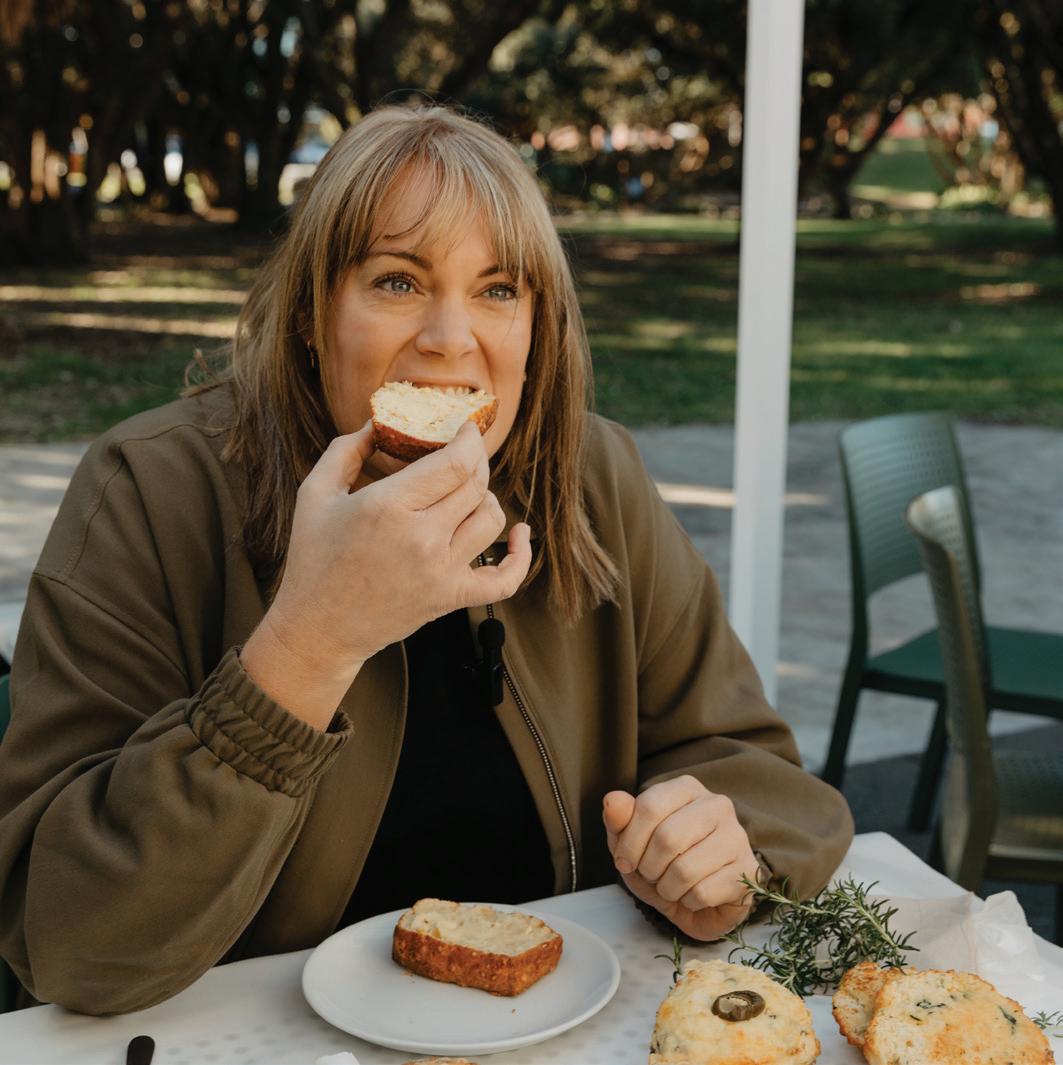
↑ Cherie sinks her teeth into finding the best scone.
up to the hype. Although microwaved rather than toasted, it’s a perfect scone.
9.5/10
So a big congratulations to Spongedrop who wins the title of Best Cheese Scone in our 2024 Cheese Scone Awards. Runner-up is Ruthy’s and third place goes to Elizabeth Cafe & Larder.
A few final notes from me before I pass away from a heart attack:
→ The price of cheese has risen dramatically and I suspect some cafes have switched to a cheaper blend of cheese, and you can taste the difference.
→ Most scones needed salt. I realise this may be a ‘me problem’, but I sought co-judging from various parties and my father - who is a long-standing scone appreciator from the age of less salt - and everyone agrees, seasoning is needed.
→ A moment of appreciation for the humble sconehow a baked item of just five ingredients can be so drastically varied, and so passionately loved by the nation.
Thank you so much to the epic cafes of the Bay of Plenty for providing us with the goods. Please don’t chase me with a flaming pitchfork for my brutally honest judgement!
I think one of the most popular recipes from the Pepper & Me inspired cookbook, Keepers, was my cheese scones with jalapenos and sundried tomato. So let’s see if these delicious date scones go just as well! This is my dad’s all-time favorite thing, a lovely giant date scone and a flat white!
Recipe by Cherie Metcalfe
SERVES 12
3 cups flour
3 tsp baking powder
2 tbsp sugar
1 tsp Bakers Blend
Zest & juice of one orange
1 cup dates
2/3 cup cream
3/4 cup milk
1 tbsp vinegar
Preheat oven to 200°C
Add vinegar to milk and set aside for five minutes.
Add flour, baking powder, sugar, and orange zest in a large mixing bowl. Season the flour with a really generous amount of Bakers Blend, 30-40 turns.
Roughly chop dates and place in a bowl. Cover with the orange juice and microwave for 30 seconds, add to the flour mixture.
Add cream and milk, mix with a fork or knife until it just comes together to form a dough. Don’t overwork it.
You can either turn the dough straight out onto a lined baking tray, or you can flour your bench if you wish to cut out round scones.
With floured hands, gently pat out the scone dough to approximately an inch thick.
Dip your knife in flour and cut into wedges.
Brush with a little extra milk and grind over some additional Bakers Blend.
Bake for 15 minutes or until golden and well risen.
Pull apart the wedges and serve warm with butter.
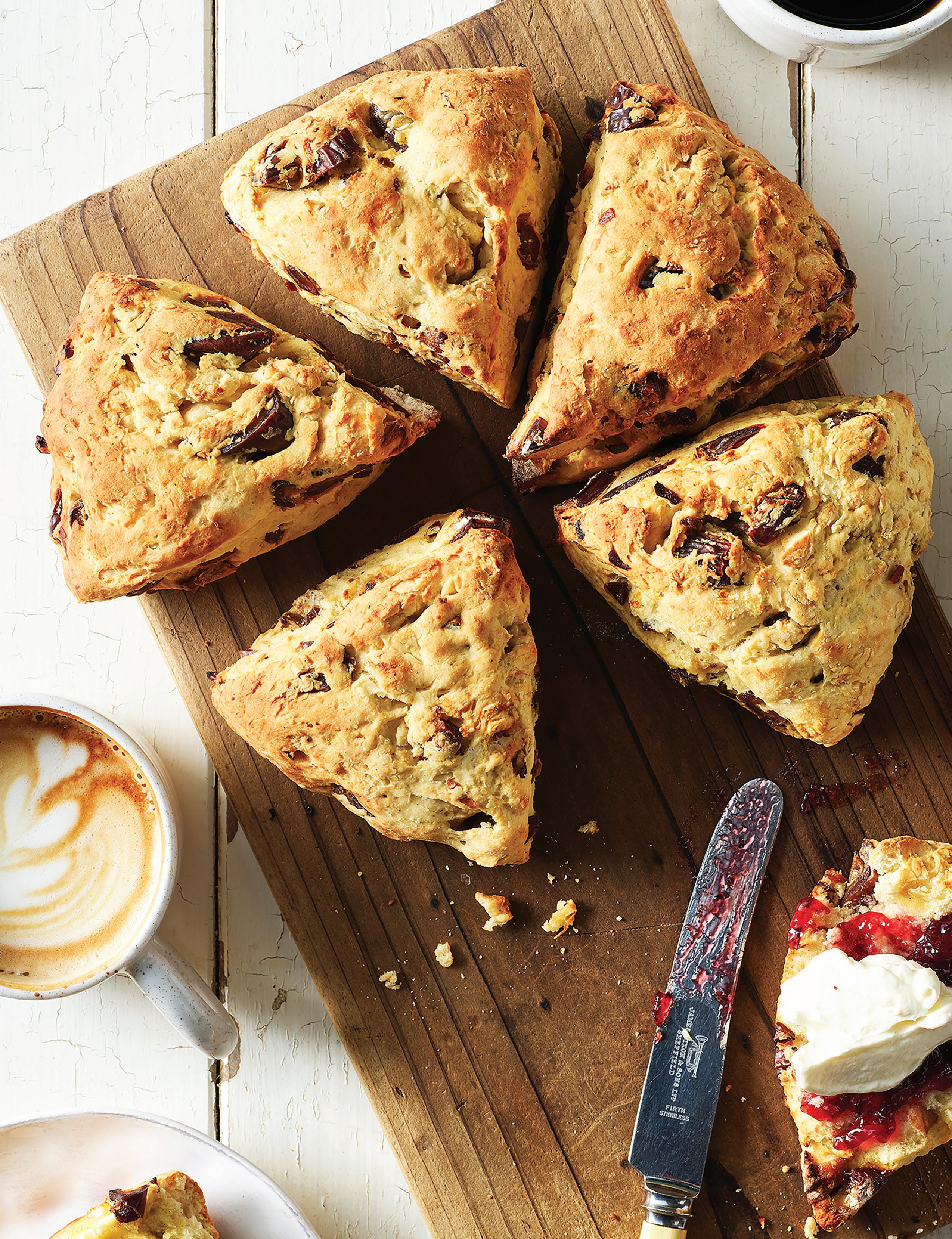
A delicious date scone is one of Cherie’s dad’s all-time favourites!

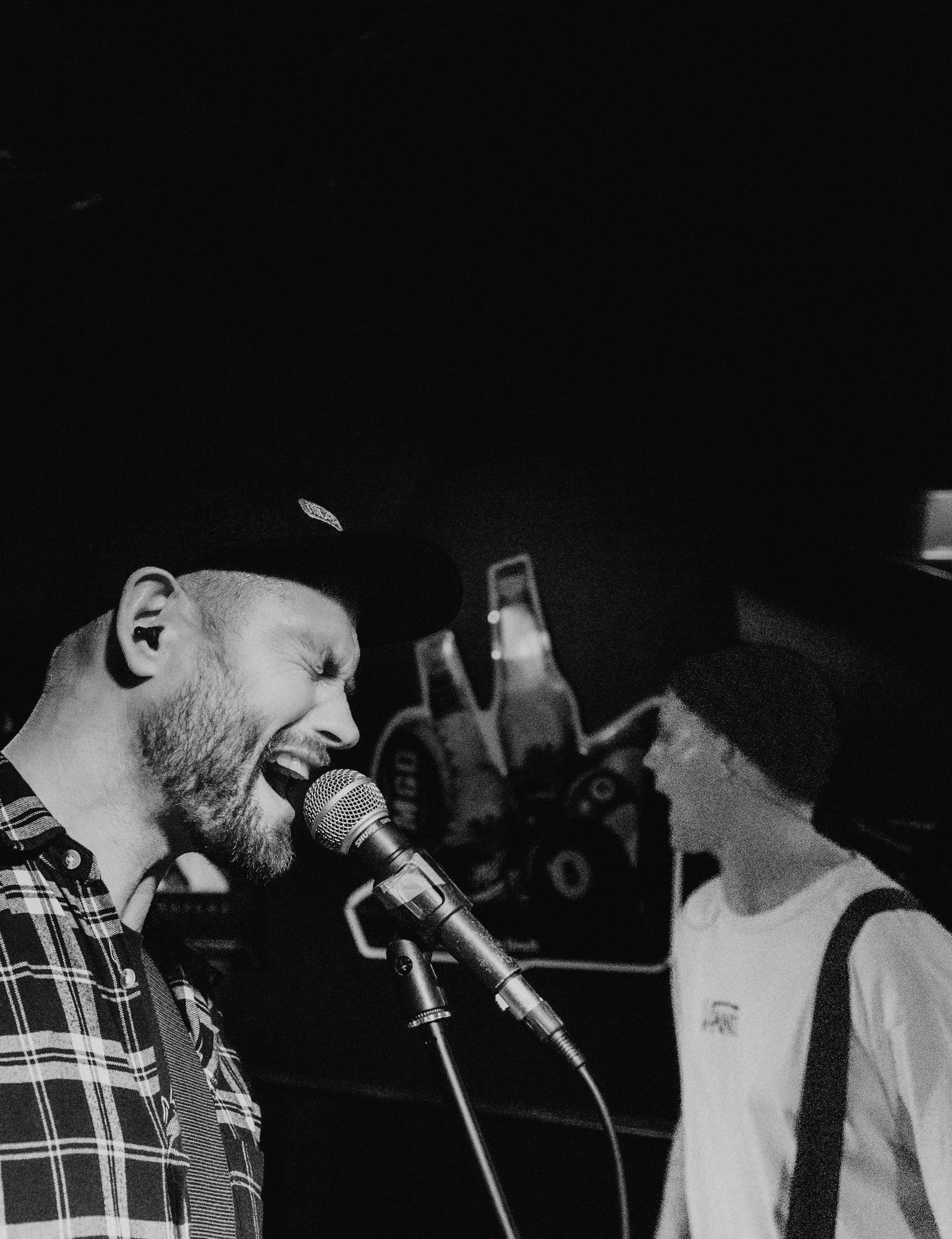
Local punk band Six Twos performed to an enthusiastic crowd at Palace Tavern recently to celebrate the release of their third EP ‘Facades’. The four dads originally got together over a shared love of punk rock. Andy says, “We started with Ramones covers but soon realised we could write our own four-chord bangers. Our sound blends ‘90s SoCal punk, hardcore, new wave, and indie shoegaze influences. We’re stoked to have found a home in Tauranga’s thriving DIY scene, and would like to do a big shout out to everyone who’s helped us record and release our music. Six Twos are: Andy Veysey - vocals and guitar, Bruce Tod - bass, Sam Cummins - guitar, and Carl Bogue - drums.



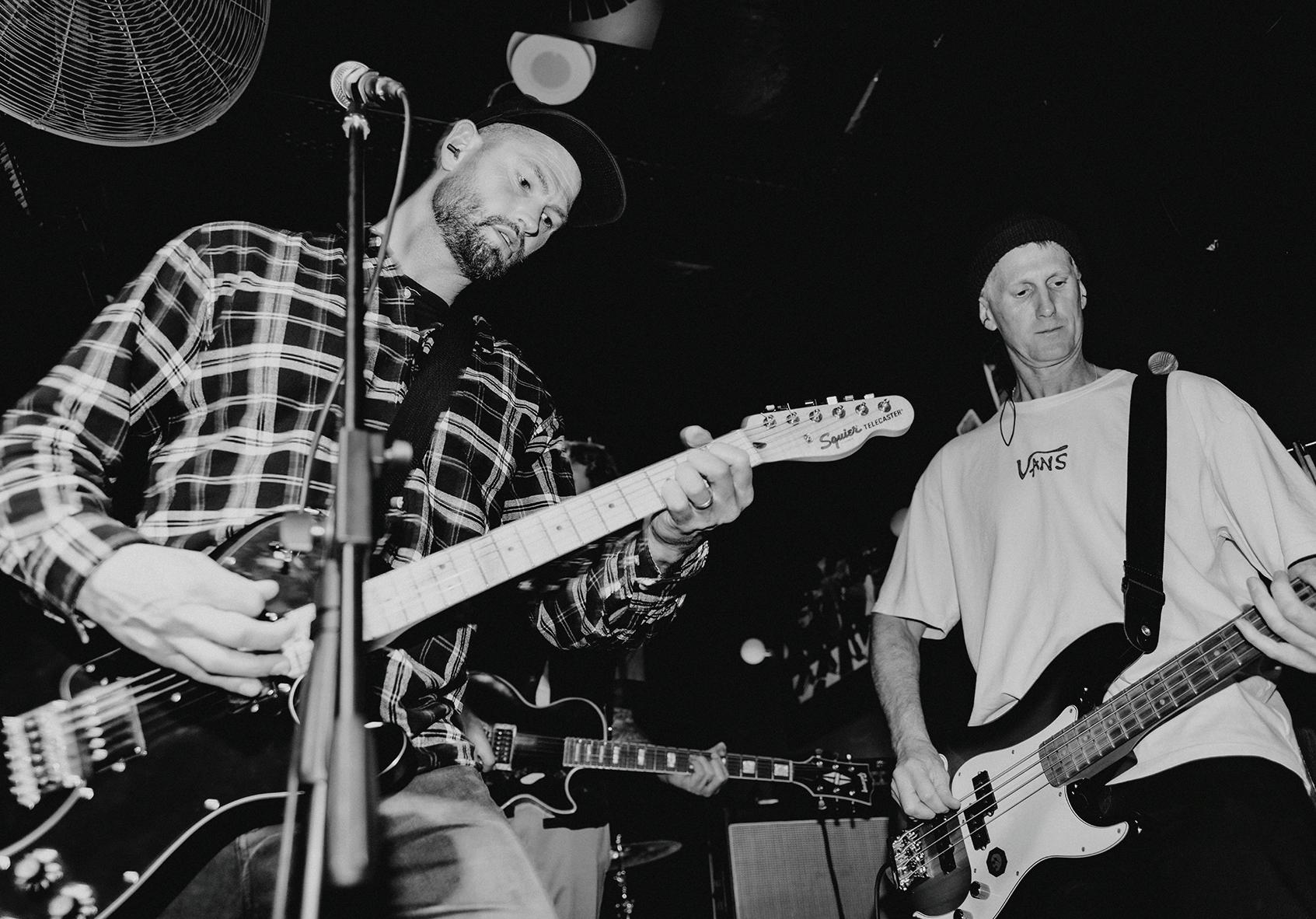


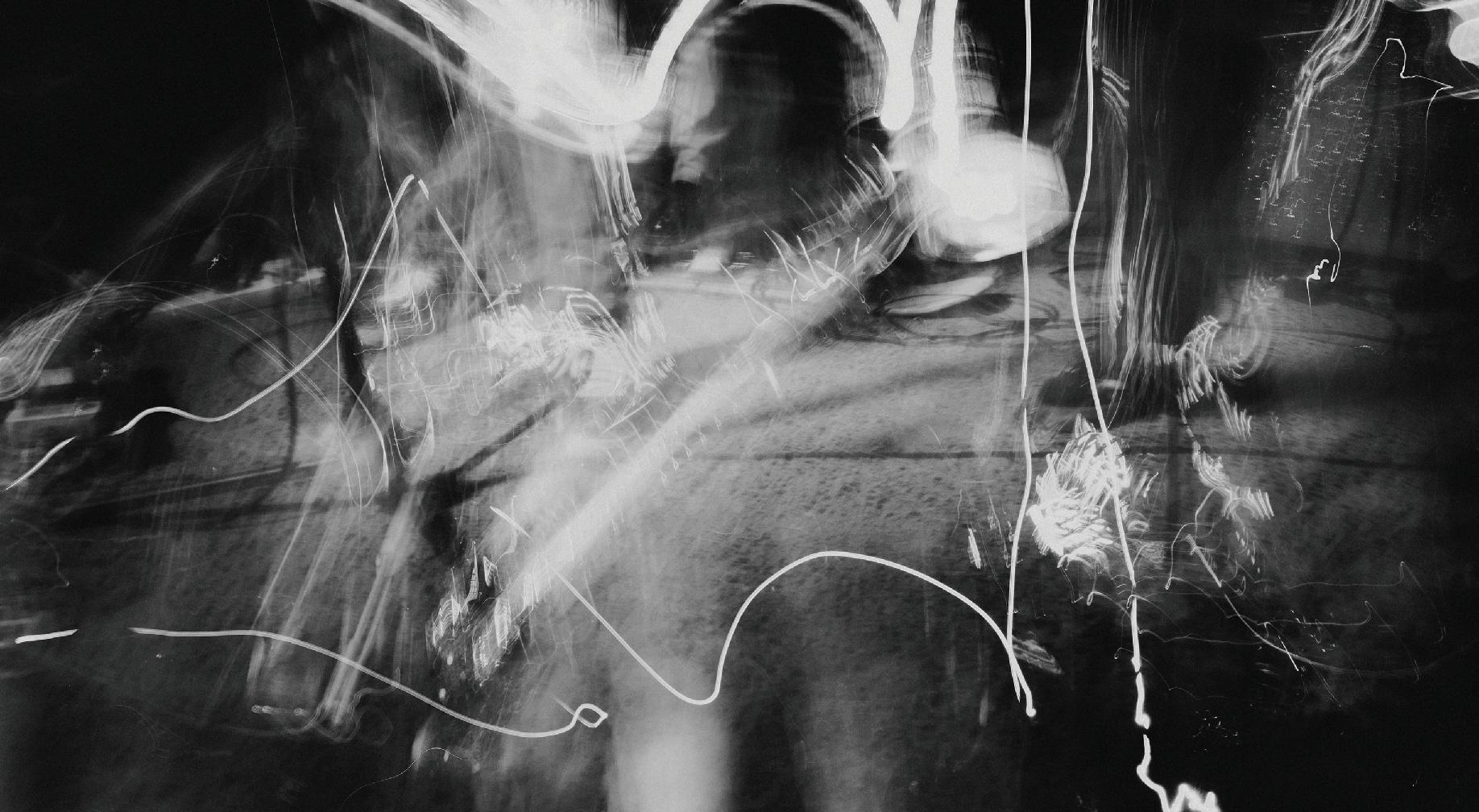
Words, recipes & styling by
Holly McVicar
Photography by ilk
We are officially over the halfway point through winter. So, in this issue, I’ve decided to look to warmer months ahead, recipes that hero citrus, and add a pop of colour to your table.
In addition to the below recipes, use dried edible flowers to finish baking, cocktails, homemade cheeses, butters, and dips.
Dried citrus also goes such a long way from garnishes, to blending into salts and spice mixes, popped into slow cooked dishes for added flavour, and gives a whole other level to your wood chips in a smoker for meats and vegetables.
A big thank you to local suppliers CM Props & Backdrops @ cmbackdrops and Crawford Road @crawfordroad_gardens for collaborating with me in this issue.
Reminiscent of Sacher-Torte, these decadent gluten-free treats are made with whole orange, dark chocolate and almond meal, and topped with the silky chocolate icing.
SERVES 12
Cakes
250g (approximately 1) whole seedless orange, washed with core and stem removed
200g almond meal
200g caster or superfine sugar
1/4 cup dark cocoa powder
1 teaspoon baking powder
4 eggs, room temperature beaten
150g dark chocolate, melted
Chocolate Icing
100g unsalted butter
100g dark chocolate, chopped Garnish with dried orange segments
Grease and line 12 mini cake tins, or large muffin tins and preheat your oven to 160°C fan bake.
Place your orange in a saucepan, poke holes all over and cover with

boiling water. Allow to simmer until the oranges are soft, topping up the water as required during the cook.
This can take some time, around half an hour, and can be done in advance. Drain, cool, and chop roughly.
In a food processor, add the almond meal, sugar, cocoa powder, and baking powder, and process to combine.
Add the eggs and chopped orange and blend until smooth. Add the melted chocolate and mix until combined.
Pour mixture evenly into lined tins and bake in the oven for approximately 35 minutes or until the centres spring back when pressed.
Remove from the oven and set aside to cool completely before icing.
For the icing, slowly warm the butter and chocolate together until melted and set aside to cool.
This can be cooled in the fridge, but in these winter months it doesn’t take long to firm up.
The icing can be spread or piped on the cakes once thickened and garnished with dehydrated orange segments.



Opener: Mini chocolate orange cakes will melt in your mouth. ↑ Wash it all down with a spicy margarita. ← Holly’s refreshing mandarin fennel salad.
Margaritas
It’s cold and I’m bringing Mexican warmth home with this cocktail. The spiced salt is amazing on fish, chicken, and crispy potatoes too.
Margaritas
120ml silver tequila
40ml simple syrup
60ml freshly squeezed grapefruit juice
60ml freshly squeezed lime juice
Spiced Salt
2 large dehydrated orange slices
2 tbsp pink salt
1 tsp sugar
1/3 tsp mild chilli powder
To make the salt, place all
ingredients into a clean spice or coffee grinder and blend until fine. Store in a cool airtight container.
To assemble, run a fresh wedge of lime around the rim of your glasses and then roll in the spiced salt. Shake all the ingredients in a cocktail shaker or large jar with a handful of ice cubes until cool. Pour immediately into your prepared glasses and garnish with a slice of dried citrus. Enjoy!
Salad
3 small tender fennel bulbs (reserve the fronds for garnishing)
4 seedless mandarins
150g chèvre cheese
Edible dried mixed flower petals
Dressing
Zest and juice of 2 mandarins
3 tbsp extra virgin olive oil
2 tbsp honey (or brown sugar)
1 tbsp red wine vinegar
Salt and pepper to taste
To prepare the salad, remove the tougher outer layers of the fennel bulb, trim off the fronds, wash, and thinly slice the bulb with a mandolin or sharp knife. Peel the mandarins and cut into thin slices. To assemble, scatter the fennel and mandarin slices on a platter. Combine all dressing ingredients in another bowl and drizzle over the top. Just before serving, gently break up the chèvre into pieces and scatter over the top along with small fennel fronds and edible flower petals.







Become


Friends of Tauranga Museum is a FREE membership programme designed to build a diverse community of museum supporters in advance of the opening in 2028. Receive regular newsletters and get invitations to exclusive Friends events.









Book your next rural escape at Kingsbury Cottage, a luxurious o -the-grid, solar-powered farm stay overlooking New Zealand's lush green landscape.




Writers Thinkers Poets Visionaries Activists Artists Performers & more.
Words by Katherine Whittaker
Ty King-Wall always dreamed of becoming a professional ballet dancer. This is his story of how a little Bay of Plenty town gave him the support to dream big.
Ty King-Wall only went to his first ballet class to support a friend. Now, the Waihi-born dancer is at the artistic helm of the national ballet company working with our top dancers.
From falling in love with the art form in a small rural town, to performing in famous ballets including The Nutcracker and Swan Lake under international spotlight – it seems the stars aligned for the young dancer who dreamed big.
It is as Matariki officially takes its place in the sky, marking the beginning of the new Māori new year, when I speak to Ty.
A time for transition and reflection, it seems appropriate as Ty and his young family – wife Amber Scott and two daughters – are busy making new rituals and traditions for themselves in New Zealand.
The family moved from Melbourne to Wellington late last year so Ty could accept the top role at the Royal New Zealand Ballet (RNZB) as the company’s new artistic director.
In his new role, Ty is responsible for planning and implementing a long-term vision for the company, hiring performance and production talent, and selecting the season’s repertoire. He can also be involved in producing, directing, or even conducting the ballets himself.
In the beginning, Ty only took a ballet class to keep a nervous friend company. While his friend didn’t take to the pirouettes and plies, Ty was hooked.
“My mum Sue saw how much I loved it and took me to the RNZB’s Cinderella and a beautiful version of Russell Kerr’s Swan Lake in 1996,” Ty says.
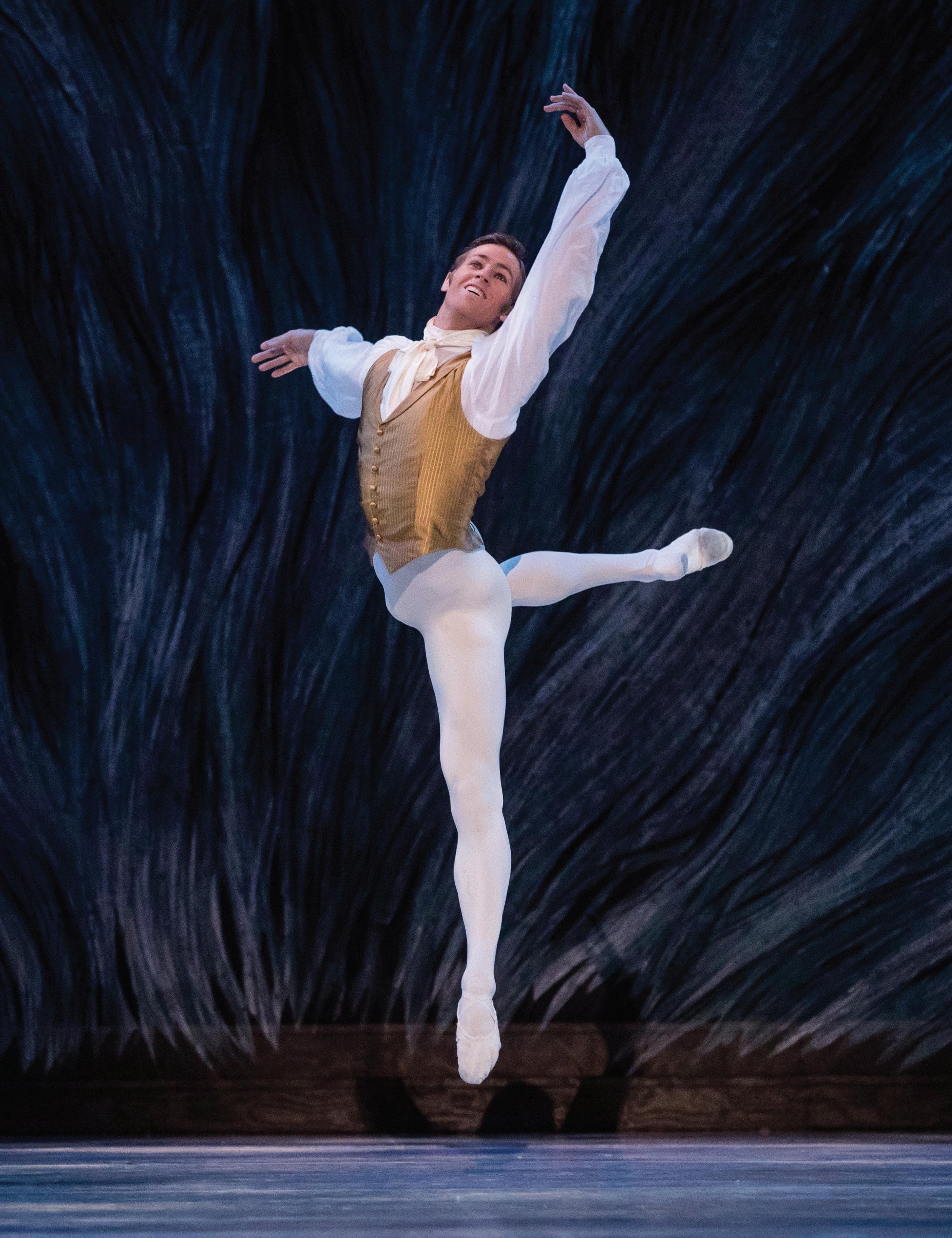
“I definitely remember being absolutely transfixed by the theatre of it all, the utter magic of it. I saw dancer Ou Lu fly through the air, and I thought ‘Man, I want to learn how to do that’.”
Living in Warkworth at the time, Ty and his parents moved to Katikati and bought a home and orchard on 15 acres of land. His father still lives on that property, and Ty enjoys the avocados he packs and sends to his young family in care packages.
“When we were growing up there, we had kiwifruit, which I could take or leave to be honest,” Ty says jokingly.
“But now it’s avos, and wow I just love them, and the boxes of them that arrive from the Bay with little messages.”
As a young dancer, Ty took lessons at the Dance Education Centre (DEC) in Tauranga. The centre, run by Prue and Debbie Gooch, was where Ty was given opportunities to appear in works including Petrouchka, Coppelia and Carmen.
“Oh, the pointing toes, and turning out of legs, we would have done hundreds and hundreds of hours of that. He was taking it seriously, almost too seriously for a young man,” Scott says.
“I could see potential, potential, potential in him but did he want it, did he really want it?”
He did.
“Ty was a very studious student. He just poured himself into it. The one thing overriding everything else with Ty was – and probably still is – passion.”
The pair shared thoughts on books, art, music and who were considered the rock stars of ballet.
“I would say ‘Hey I’m an okay dancer, but here’s Baryshnikov or Nureyev. Take these videos (as they were then) away and tell me what you think. These guys will blow your mind,” Scott says.
“Tell me what you love about their dancing, and we’ll figure out how to put it into your dancing.”
He also tried to teach Ty about the importance of music, everything from Miles Davis to Nirvana and
“As a male dancer there’s a different way of moving, a different way of holding yourself … you can’t train a male like you train a female dancer. And honestly, being a male in quite a feminine art form, can be tough.”
Ty remembers his male ballet teacher – Scott Milham – being a massive influence in his dance journey during his time at DEC.
“You can feel very isolated as a male dancer, so I consider myself very fortunate that Scott was there at that time. He was a great role model,” Ty says.
Ty was 12 when Scott met him.
Scott says in the tough, competitive world of dance, you have to be extremely committed, and it helps to have a committed family too.
“The trip from Katikati to Tauranga is 30 or 40 minutes, and I remember Ty’s family was always early. Partly because Ty was so keen, and partly so Sue could make food in the kitchen for the kids, and sometimes for me. It was the most delicious food.
“As a male dancer there’s a different way of moving, a different way of holding yourself … you can’t train a male like you train a female dancer. And honestly, being a male in quite a feminine art form, can be tough.”
Scott taught Ty for about four years and it was quickly apparent Ty had the work ethic required.
System of a Down.
“I would say, ‘you know that rrrrrrrrrrrrrrrrr from that System of a Down song you love? Let’s work out how to put it into your dance. We’re all organisms, and things that happen in your life will infuse your dance.”
Ty’s passion and work ethic were second to none, says Scott, who believes the RNZB is lucky to have a man like Ty in charge of its artistic direction.
“It (RNZB) needs to be connected to the country, and I couldn’t think of a better person to do it.”
At age 16, Ty went to Australia to further his ballet career.
“I was very driven to be a professional dancer. I felt that in me from a young age,” he says.
“When I left Katikati, people were very supportive and helped me out a lot with fundraising and support. That kindness was hugely important in formative years.”
While across the ditch, Ty attended the Australian Ballet School, graduating as dux with honours. He was accepted into the Australian Ballet in 2006 and promoted to principal artist in 2013.





↑ Ty is the Royal New Zealand Ballet’s new artistic director.
He was there until 2022, touring internationally and featuring in The Nutcracker, Giselle, Don Quixote, and Swan Lake among others before he retired as a dancer.
It was, he says, an amazing, exhausting and at times, surreal time.
“Ballet dancers are like the lost kids at Neverland. We never really grow up, as we get to continue to play dress ups for our job for years.”
Ty also holds a Bachelor of Arts (Classical Studies/Psychology) through Massey University, and a Master of Arts and Cultural Management through the University of Melbourne, for which he conducted research on the career demographics and retirement motivations of professional ballet dancers.
What Ty has found different in his work life is that performance anxiety hits harder, or more accurately, in a different way as artistic director.
“As a dancer you are in control of your own destiny. As artistic director, it’s not up to you. It’s over to the dancers on the day. I know we’ve put the mahi in, but it’s out of my hands. It’s a very different feeling.”
The first half of 2024 has been chockablock with ‘full circle moments’ for Ty. As part of the ballet’s Tutus on Tour, which takes ballet to the regions every two years, he returned for the sold-out Tauranga shows.
“Being back at Baycourt, memories of performances and competitions came flooding back to me. The magic of being on stage in those early
years, watching and learning from the other dancers. Even flying into Tauranga Airport brought back lots of memories.”
As Ty and his young family work their way into a new life in Wellington’s hilly Khandallah, he feels he has a lot to feel thankful for, and a lot to introduce his daughters to.
“When we landed, we did our own little Tutus on Tour as a family,” Ty says. “It is such a beautiful country. It felt amazing to be back.”
As the interview draws to a close, Ty says he has been feeling reflective and grateful for those who got him to where he is now.
For many, Matariki is a time to reflect on loved ones lost during the last year. Sir Jon Trimmer, legendary dancer and Royal New Zealand Ballet stalwart for 50 years, who passed away last year is one of those Ty remembers. “His contribution to our company and dance in this country was immense. We owe him a huge debt of gratitude,” Ty says.
And while Ty has already scaled great heights in his career and life, he acknowledges he has goals –including a special one back in the Bay of Plenty – still to achieve. “Listen, this is almost sacrilegious to say, but I have never climbed the Mount (Mauao). It just didn’t happen. So that’s on my list.”
rnzb.org.nz
24 GIN EXHIBITORS | 80+ GINS TO TRY
3 GIN THEATRE SESSIONS EACH DAY | LIVE ACOUSTIC MUSIC

2nd /3rd 2024 NOVEMBER WHAREPAI DOMAIN
As I near the finish line of a Dry July, I’m awarding myself a mediocre 6.5 out of 10 for my e orts. Despite the continued temptation, I’m determined to end on a high note—not by indulging in anything illicit, but by savouring the exquisite loose leaf blends from Webster’s Tea. Rest assured, I’m adhering to their instructions: these leaves are only getting soaked in boiling water, not rolled up and smoked.
Webster’s Blood Orange Tea isn’t just a drink; it’s an experience—a leisurely afternoon in a cup you might say. This blend, featuring naturally sweet South African Rooibos, juicy blood orange peels, hibiscus and tea blossoms, promises a sip that transports you to some remote shrubland where there isn’t a single person around to irritate you.
The first taste is a revelation. The rooibos o ers a smooth, almost honeyed base, which is immediately enlivened by the tangy zest of blood orange, which arrives like a gentle slap on the face.
The hibiscus, with its subtle floral notes, ties it all together like the final piece of the puzzle, which was hiding down the back of the sofa.
It’s also obvious the tea blossoms threw their keys into the bowl at the seasonal pollinators party, but I’m not here to judge on any vegetational lifestyle choices here.
Sure, it’s not going to reverse the clock or make me feel 25 again, but it’s a damn good brew to savour while I grumble about the good old days. Webster’s Blood Orange Tea is a delightful reminder that some things do get better with age—even if I don’t.


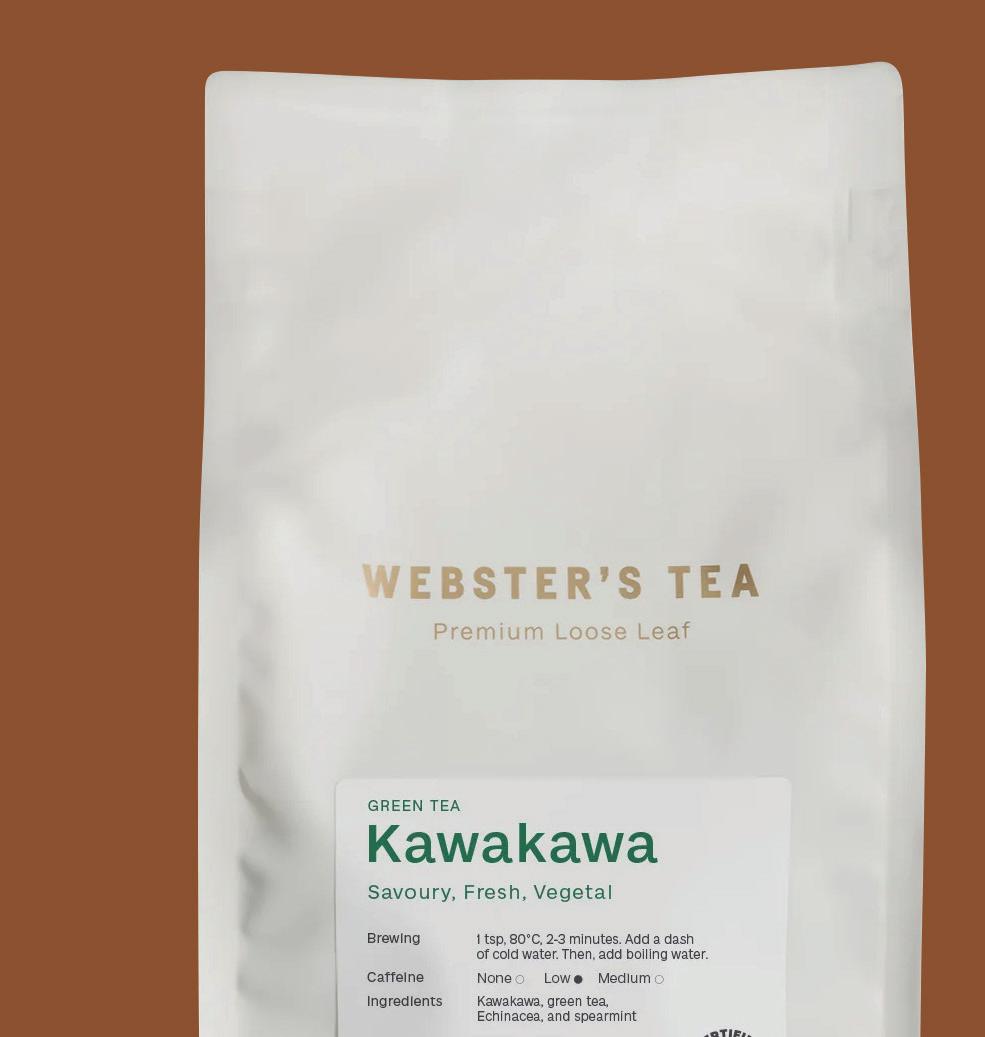



Webster’s Kawakawa Tea is like sipping a magical elixir, harnessing the superpower of kawakawa, New Zealand’s healing plant and traditional Māori medicine. Known to soothe the digestive system, treat abrasions, and cure toothaches, I found myself wondering whether I should be drinking this or just lathering myself in it. The green tea lends a familiar, grounding taste, while the echinacea whispers promises of immune system invincibility—something that would’ve been handy a few years ago. It makes me wonder if there’s a plant that might’ve blocked echo chamber conspiracy theories as well. Anyway, the spearmint rounds it out with a refreshing zing.
Taking a sip feels like a warm embrace from Mother Nature herself, reminding me of the incredible bounty the natural world has to o er. The combination of flavours is perfectly balanced, neither too overpowering nor too subtle, creating a harmonious symphony.
It’s as if Webster’s has packaged up a bit of New Zealand’s soul, and I can drink that can-do attitude all day long.
This Chai is what I imagine drinking a Bollywood film would taste like: vibrant, unpredictable, and captivating. It’s like a spice bazaar exploding in your mouth—but in a good way. It’s got the drama of cinnamon, the intrigue of ginger, and the passionate canoodle of cardamom. Throw in some cloves and fennel for that exotic twist, and you’ve got a brew that would make Priyanka Chopra faint.
It’s not just a film though; it’s a fully-fledged saga. Each sip is a plot twist, with black pepper adding that unexpected zing, while the liquorice root whispers suggestive one-liners in your ear that would make any radical free thinker blush. And then the natural spice flavour ties it all together, wrapping up this dramatic narrative with a perfect ending.
Sure, there are teas that promise a quiet, contemplative moment. This isn’t one of them. Webster’s Chai Black Tea is a boisterous festival of flavours, dancing on your palate. It’s an experience that makes you want to break into song and dance. Perfect for when you need a bit of Bollywood in your life and an escape from the mundane, it’s a true celebration in a cup.
The moment I opened the packet of Webster’s Sencha Green Tea, I was transported to the misty mountains of Zhejiang province, with the clinking swords and ancient martial arts wisdom echoing in my mind. If this tea were a kung fu master, it would be the grand, wise elder who only speaks in riddles and whose eyebrows have their own gravitational field.
I brewed a cup and took a sip, half expecting instant enlightenment, or sudden proficiency in crane-style kung fu. Instead, I was greeted with a flavour that could elbow strike through any afternoon slump – crisp, vegetal, and with a hint of that elusive “I-know-something-you-don’t” mystery.
The tea’s clarity was like a well-executed roundhouse kick: clean, precise, and humbling. Drinking it felt like being in the middle of a kung fu training montage, but instead of breaking boards, my stress levels were breaking down. I could hear my inner voice telling me, “Grasshopper, calm your mind, and the rest will follow”.
It’s the Jackie Chan of teas – tough on lethargy, smooth on the soul.
Ah, Earl Grey, the tea that’s as enigmatic as the dubious dealings of a Victorian gentleman. Legend has it, a Chinese mandarin gifted the recipe to Earl Charles Grey after one of Lord Grey’s men saved his son from drowning. In reality, it was probably an opium-fueled fever dream. But hey, history loves a good anecdote.
Fast forward to today, and some mad genius has decided to pimp our old friend with blue cornflowers and a whisper of vanilla. Imagine the Earl himself, sitting in his dusty armchair, muttering, “By Jove! This taste is quite extraordinary!” as he takes a sip.
This Earl Grey is not your grandmother’s cup of predictable history; it’s a scandalous a air of flavours. So, if you’re up for a tea that’s part historical mystery, part floral extravaganza, and absolutely delicious, give this Earl Grey a go. Just don’t let the Earl know what they’ve done to his legacy.
Don’t just take my word for it, visit Webster’s Tea instore or online and become a better human being. websterstea.co.nz websters.tea


















LES MISÉRABLES 1.00pm & 7.00pm
Addison Theatre
Theatre

Reser ved seating
Prices from $55.00 to $70.00
Tauranga Musical Theatre returns with the musical phenomenon Les Misérables! Featuring an all local cast and live 14-piece orchestra, don ’t miss this epic tale of passion and redemption, celebrated worldwide as “ The Show of Shows!”

ED BYRNE
8.00pm
Addison Theatre
Comedy

Reser ved seating
Prices from $59.9 0 to $69.9 0
From the quote at tributed to Mark Twain, humour is defined as Tragedy Plus Time . Join Ed Byrne as he tests that formula by mining the most tragic event in his life for laughs.
19
ULTIMATE DRAG SHOW 7.30pm


Addison Theatre
Drag Reser ved seating

Prices from $41.68 to $48.4 3
Sashay, shante , and slay with the most fabulous drag per formers from coast to coast. An extravagant night of glitz, glamour, high-energy lip-syncs and stunning runway looks!
For more information visit us
Sat Tauranga Farmers' Market
7.45am–12pm, Tauranga Primary School, 5th Ave, Tauranga
Sun Mount Mainstreet Urban Market
8am-12pm, Te Papa o Ngā Manu Porotakataka, 137 Maunganui Rd, Mt Maunganui
1–4. Trust Horizon, Light Up Whakatāne - Light Festival 2024 6-9pm, Whakatāne CBD, Whakatāne
2. 'Mafia Casino' - Mid-Year Comedy Dinner Show 7pm, Hotel Armitage, 9 Willow St, Tauranga eventfinda.co.nz
3. NZ Beatles Tribute Show
7.30-11pm, Mt Maunganui RSA Buy tickets – 07 5754477
The Little Big Markets
9am-2pm, Coronation Park, Mt Maunganui
'Allo 'Allo - Le Dinner Show 2
7-10pm, Hotel Armitage, 9 Willow St eventfinda.co.nz
4. Ninja Kints - Yarnbombers Social Gathering
9.30-11.30am, The Incubator Creative Hub, The Historic Village, Koha
6. Quiz Night - World's End 7pm, World's End Bar & Restaurant, 227 Fraser St
DanceNZmade Interschool Regional 6-10pm, Baycourt Addison Theatre eventfinda.co.nz
8. Canvas Tauranga Careers Expo 9am-2pm, Mercury Baypark
9. Kita Mean's Winter Queens of Drag + Drag Bingo
6.30-11pm, The Cargo Shed, 5 Dive Cr, Tauranga, eventbrite.co.nz
10. Sausage Making Workshop 9am-12pm, El Jefe Meats, 3/60 Aviation Ave eventfinda.co.nz
Thrift Shop Ball 7.30pm-1am, Totara St, 11 Totara St Buy tickets – 0276226452
15. Ed Byrne: Tragedy Plus Time 8pm, Baycourt Addison Theatre eventfinda.co.nz
16. Chinese Mid Autumn Cultural Night 6-8pm, Baycourt Addison Theatre eventfinda.co.nz
Summer Thieves 8.30pm, Totara St, 11 Totara St totara.flicket.co.nz
17. The Little Big Markets 9am-2pm, Coronation Park, Mt Maunganui
Girls Just Wanna Have Fun - 80's Party 8pm, Totara St, 11 Totara St, totara.flicket.co.nz
Park Rd ‘The Novel’ Album Release Tour 8pm, Palace Tavern, 1c/217 Maunganui Rd loop.flicket.co.nz
18. Potato Gnocchi and Tiramisu Class 11am-1.30pm, Papamoa Sports & Recreation Centre, eventbrite.co.nz
24. Mount Maunganui Half Marathon 8am-12.30pm, Mt Maunganui Surf Club mountmaunganuihalfmarathon.co.nz
24– Tauranga Food Show
25. 10am, Mercury Baypark Arena taurangafoodshow.nz
25. The Little Big Markets X Latitude 37 Christmas Market 9am-3pm, Latitude 37, 181 Maunganui Rd
30. Absolute BOWIE Tribute 7pm, Totara St, 11 Totara St totara.flicket.co.nz
@ourplacemagazine
1. Ninja Kints
Yarnbombing Social Gathering
9.30-11.30am, The Incubator Creative Hub, The Historic Village, theincubator.co.nz
Harry Potter Quiz 2pm, World's End Bar & Restaurant, Tauranga trybooking.com
2–21. Artful Mind - Collaborative Exhibition
10am-3pm, The Incubator Gallery 17th Ave, Tauranga South
5. Soundscapes
NZ String Quartet Tour
7-9pm, The Jam Factory, The Incubator Creative Hub, The Historic Village Buy tickets – 07 571 3232
Quiz Night at Astrolabe 7-9pm, Astrolabe Restaurant, 82 Maunganui Rd
6. Rikki Morris at the Jam Factory 7pm, The Jam Factory, The Incubator Creative Hub, The Historic Village, theincubator.co.nz
The Gatsby Era
11am-12.45pm, Holy Trinity Church, 215 Devonport Rd. eventfinda.co.nz
Mount Maunganui Meditation
7-8.30pm, May St Scout Hall, 13 May St
7–13. Zespri AIMS Games
7. Holotropic Breathwork
9am-8pm, Welcome Bay Community Hall www.holotropicao.com
Don't Stop Moving!
2.30-4.15pm, Graham Young Youth Theatre, Tauranga Boys' College, eventfinda.co.nz
The Little Big Markets 9am-2pm, Coronation Park, Mt Maunganui
11– Les Misérables 15. 7pm, Baycourt Addison Theatre eventfinda.co.nz
14. Rongoā Balms Workshop 10am, Creative Community Campus, Turner Gallery, Tauranga theincubator.co.nz
19. Ladies Night 7-9pm, But First Dessert, Tauranga events.humanitix.com
20. Blame it on the Boogie - Funky Disco Party 8pm, Totara St, 11 Totara St totara.flicket.co.nz
21. The Little Big Markets 9am-2pm, Coronation Park, Mt Maunganui
Greerton Spring Fling Festival 9am, Greerton, Tauranga
Thrifted Finds - Spring Fling 9am-2pm, Greerton Village Hall
21– Faulty Towers The Dining Experience 22. Tauranga Multiple times, Hotel Armitage, 9 Willow St, Tauranga, eventfinda.co.nz
Tauranga Women's Lifestyle Expo 2024 10am-4pm, Mercury Baypark, iticket.co.nz
25. TJS Jazz Jam 6.30-9.30pm, Mount Social Club, 305 Maunganui Rd
28. Rewind - 2000's White Party 8pm-12.45am, Totara St, 11 Totara St totara.flicket.co.nz
Hitched Tauranga Wedding Inspo Weekender 6-9pm, The Cargo Shed, Dive Cr, Tauranga
29. Country Music 1-3.30pm, Mt Maunganui RSA

Get the right skills employers need!
You don’t need to move away to get a quality education with our campuses located across the Bay of Plenty and South Waikato rohe. With our range of study options to suit you, including online and part-time, you can study your way.
Our expert tutors are well connected with local employers and are here to empower your learning and guide you every step of the way. toiohomai.ac.nz